The document discusses the role of databases and security in modern society, highlighting their integration into daily processes such as internet searches and utility management. It emphasizes the importance of database security, pointing out the need for a multilayered approach based on the CIA triad: confidentiality, integrity, and availability. Additionally, it addresses gender disparity in education as a determinant of foreign direct investment (FDI), finding that FDI is discouraged in countries with high gender disparities in education, particularly in middle-income developing nations.

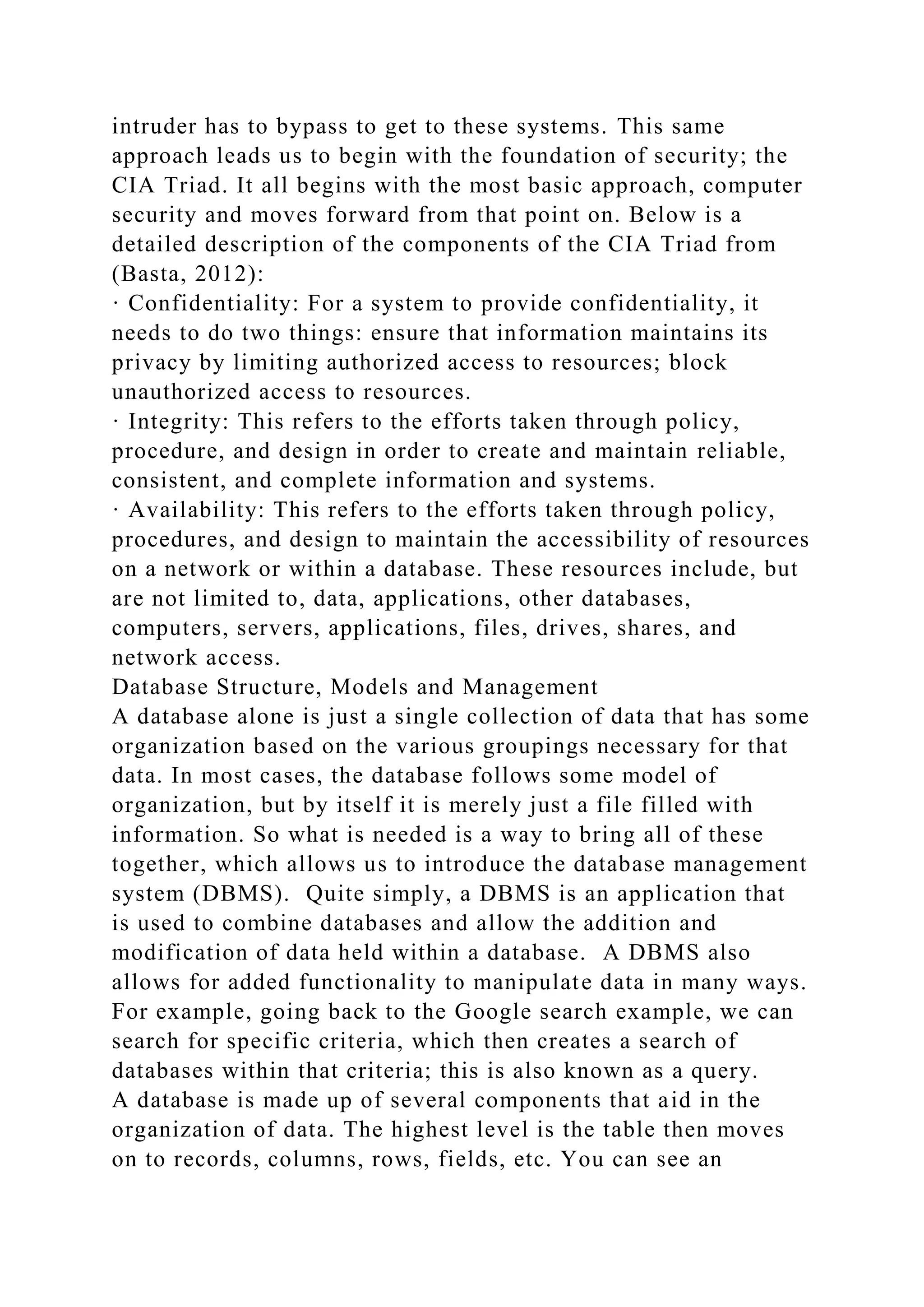
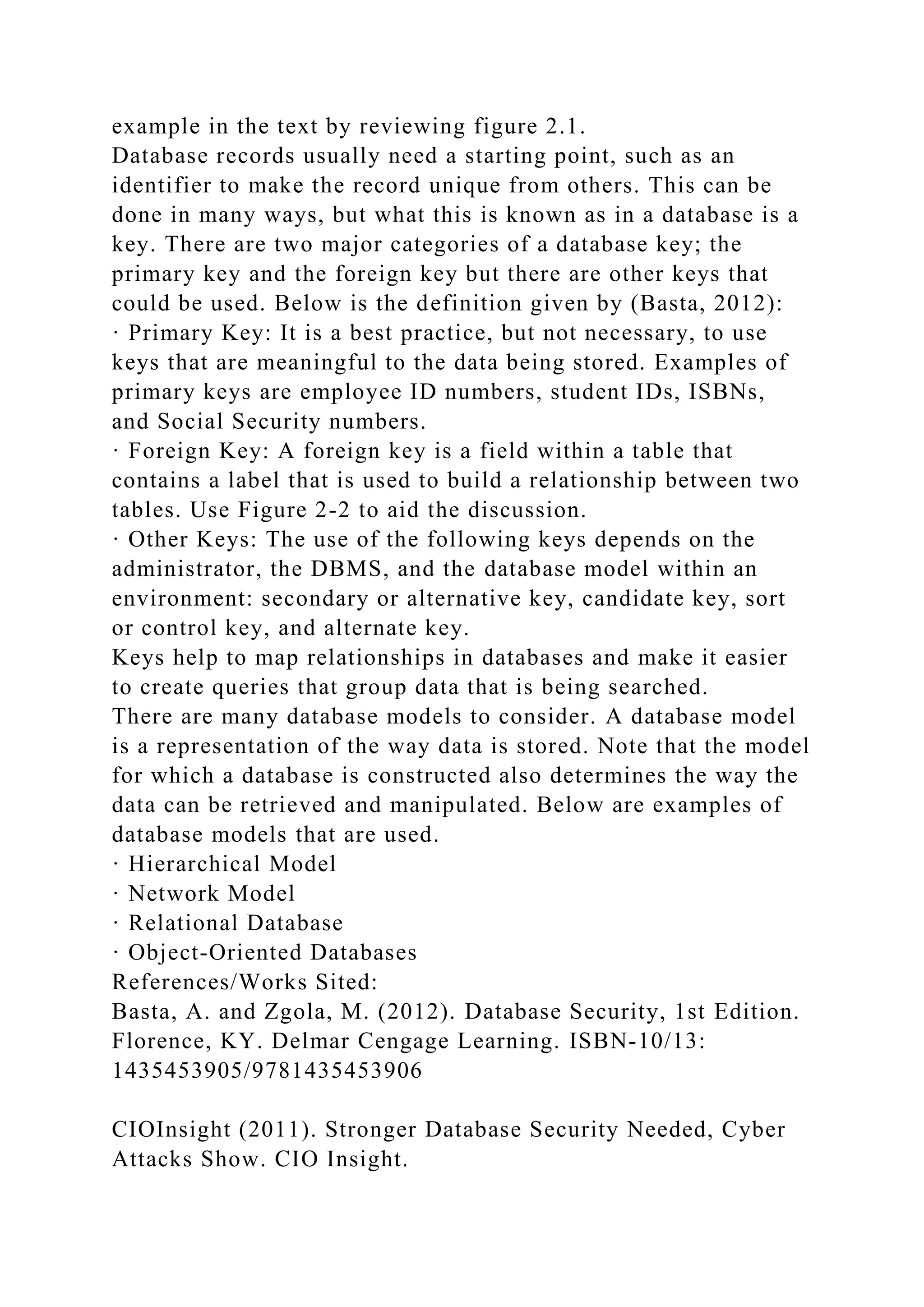

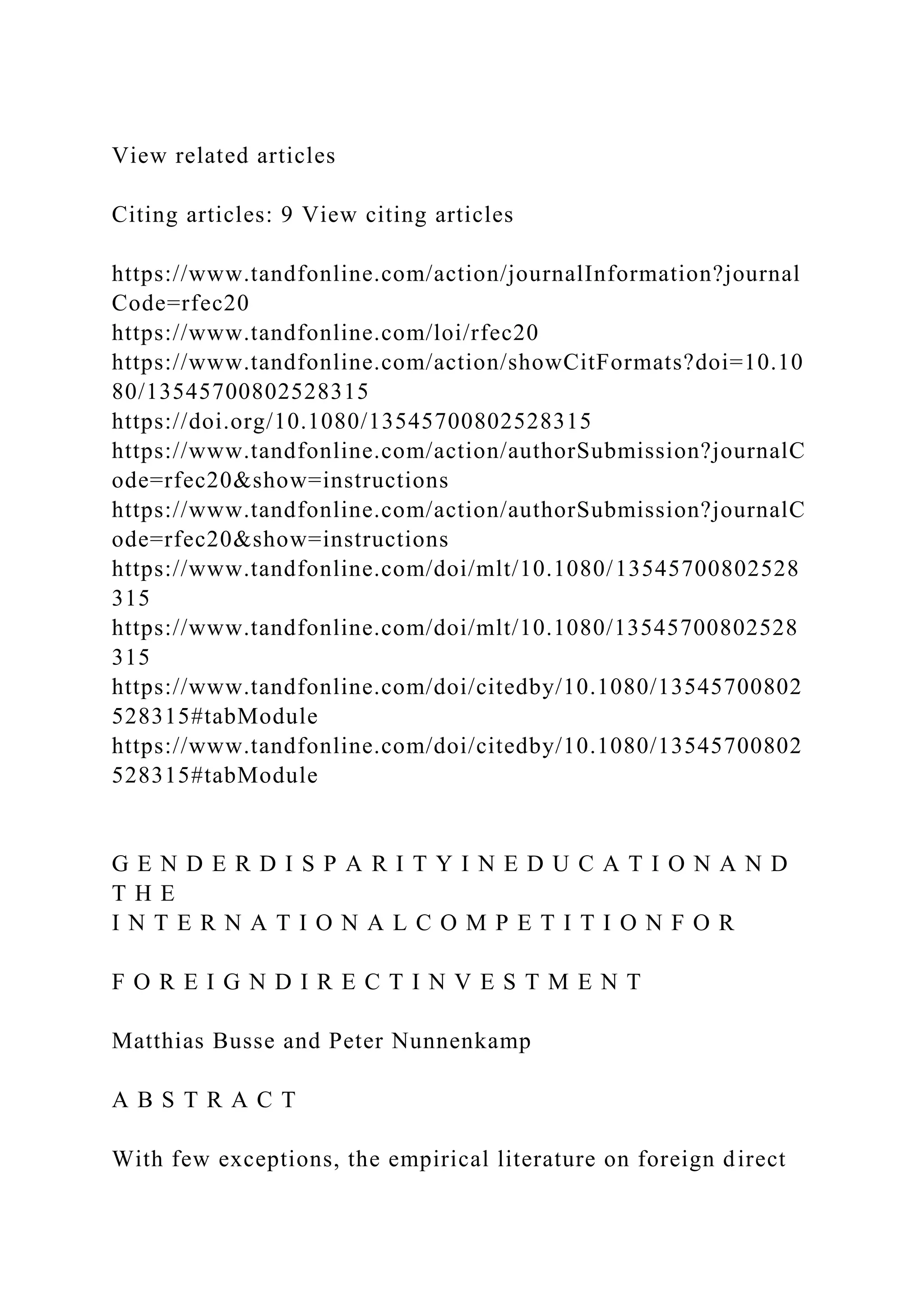

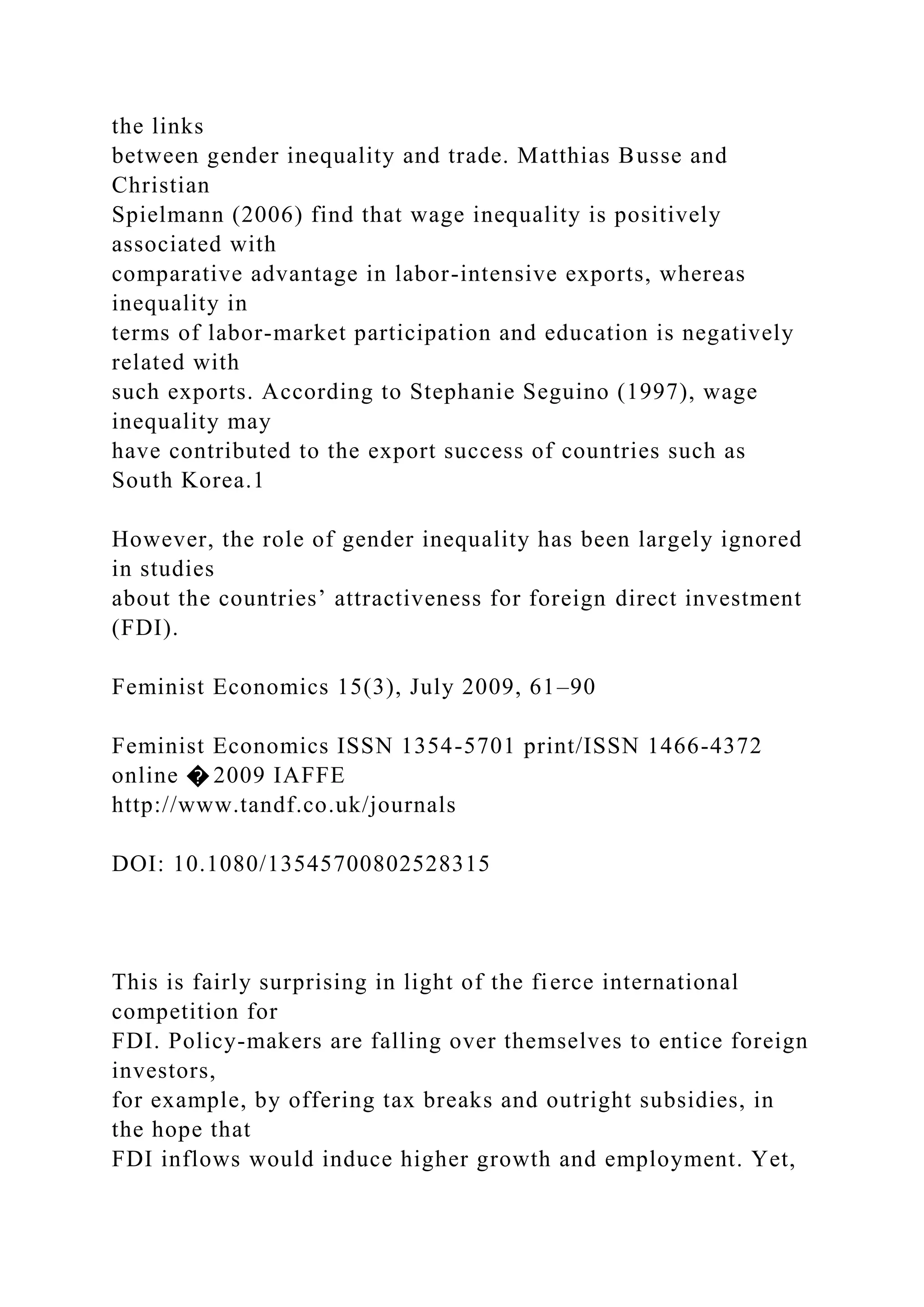
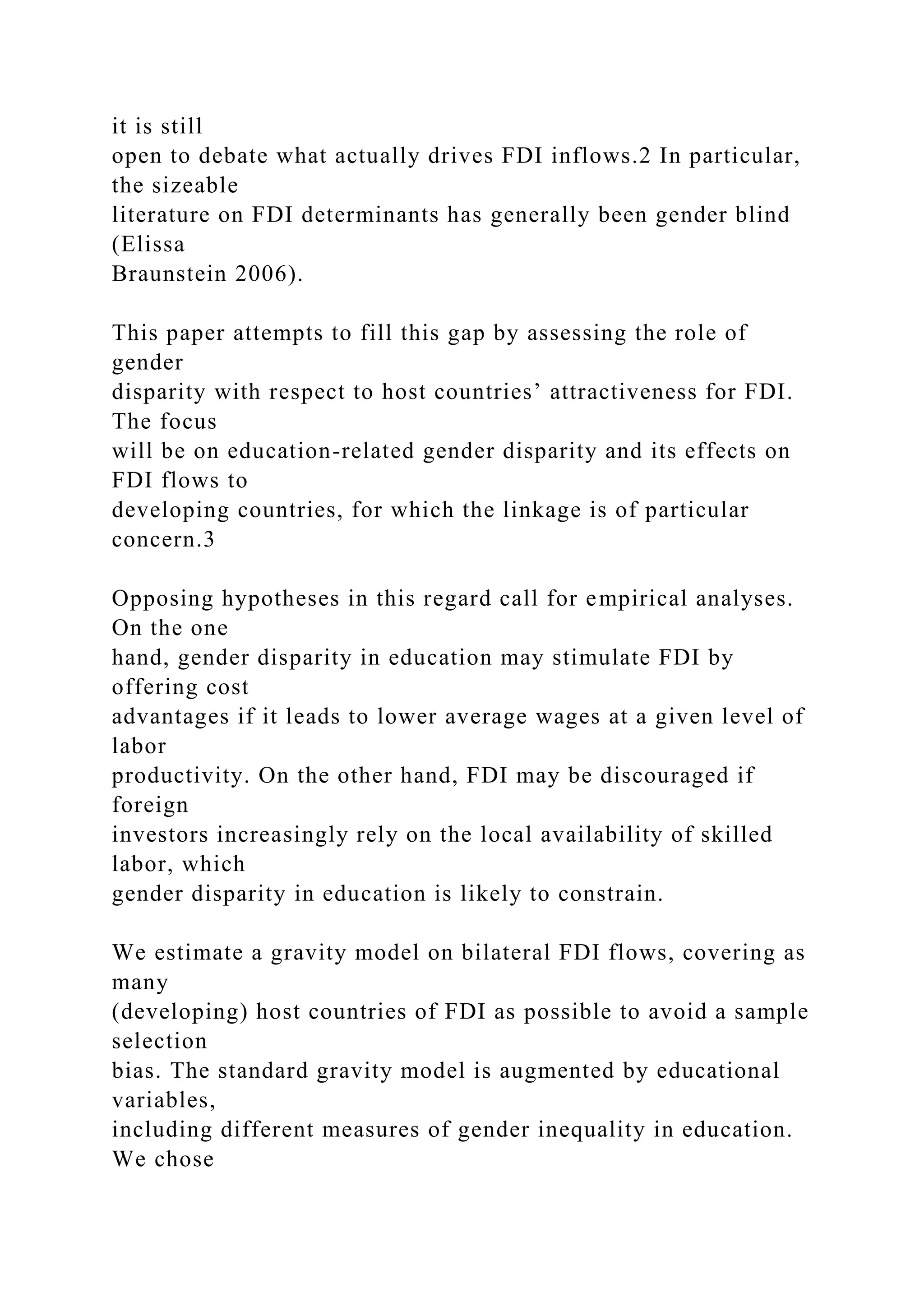
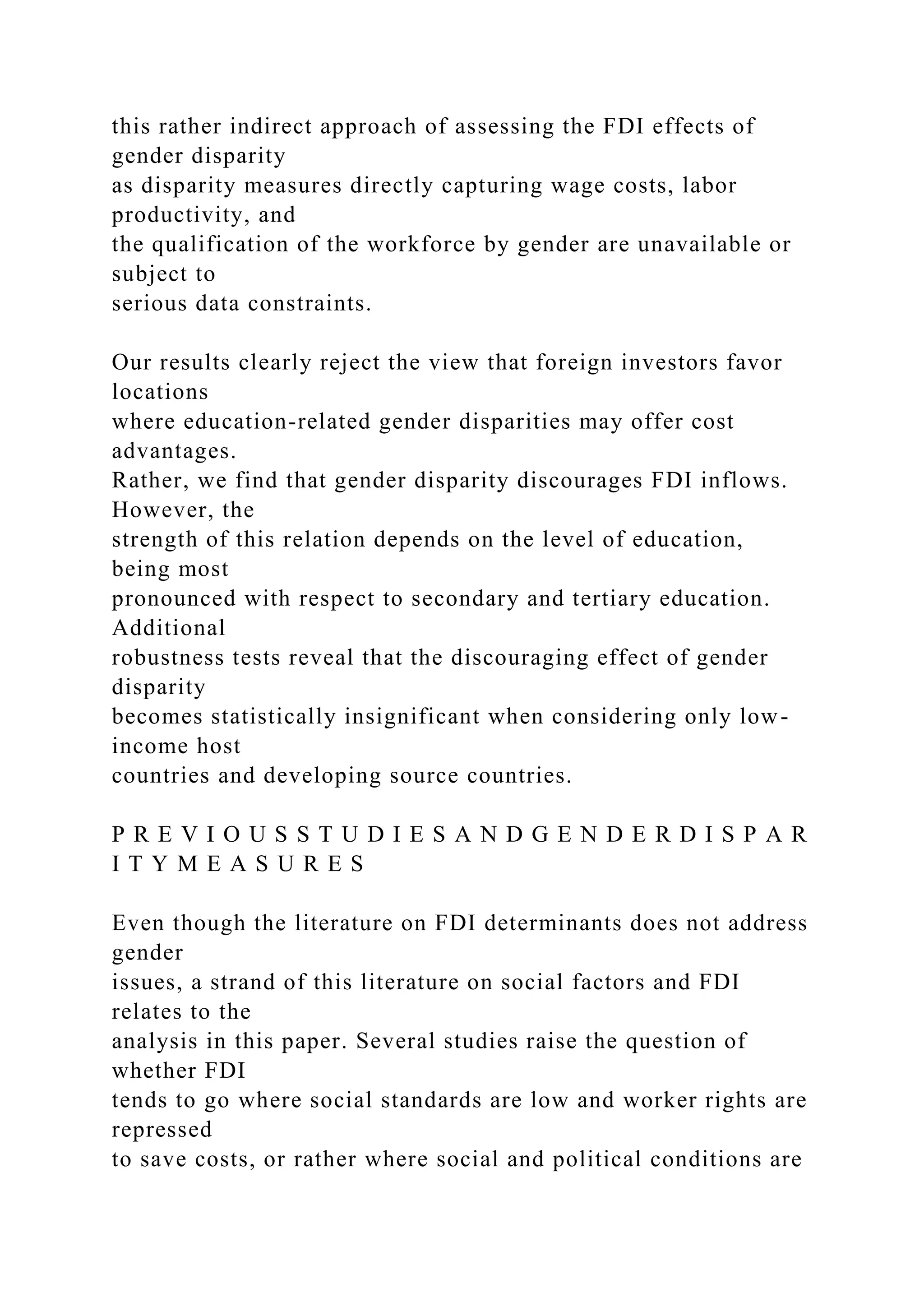
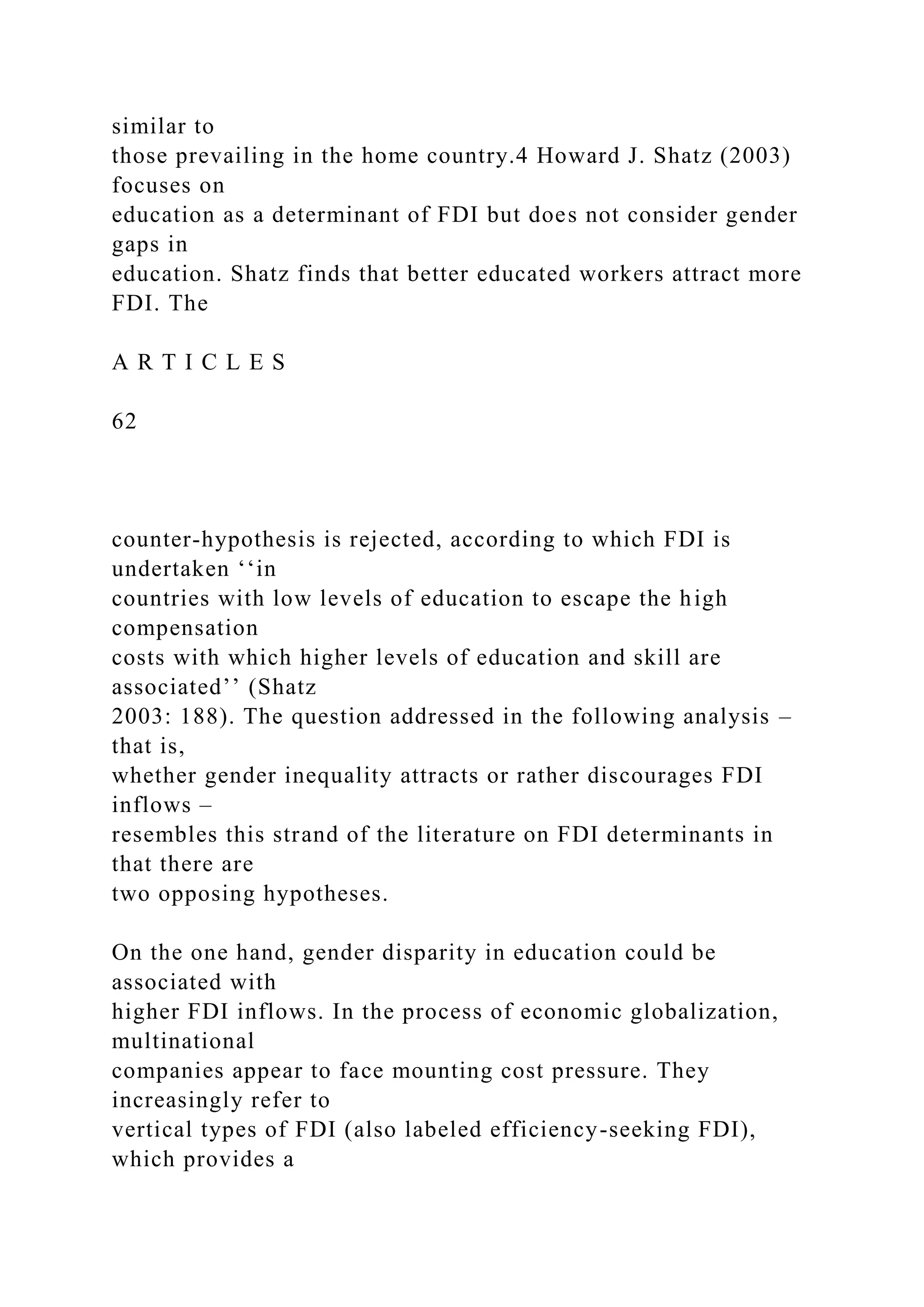


![by changes in unit labor costs. This type of FDI essentially duplicates the parent company’s production at home in the host countries. Market access motivations dominate over cost considerations, and factor intensities of production in the host countries largely resemble those at home. Hence, the importance of unit labor costs for overall FDI inflows is likely to depend on the composition of FDI, which – though difficult to measure exactly – tends to vary considerably across host countries (see also Kucera [2002]). Ideally, we would like to cover several aspects of gender disparity and their effects on FDI inflows, including gender wage gaps, differences in labor-force participation rates between males and females, and education- related differences. The focus on education-related disparity measures implies some limitations. Inferences about the FDI effects of gender disparity in general remain indirect and incomplete. First, education- related measures tend to capture the net effects of two transmission mechanisms running through wages and labor productivity, without being able to disentangle them. Second, any positive FDI effects of less disparity in education may be associated with gender wage disparity to the](https://image.slidesharecdn.com/week1databasesandsecuritylessondatabasesandsecurity-221119031308-df83ee2c/75/WEEK-1-Databases-and-SecurityLesson-Databases-and-Security-docx-13-2048.jpg)
![extent that an improved qualification of female workers does not lead to a corresponding pay rise. Consequently, concerns about gender equity and fairness would not necessarily be overcome if only less gender disparity in education resulted in more FDI. However, wage disparity measures and differences in labor- force participation rates are not particularly useful as possible determinants of FDI in the present context of a large panel of host countries and a time span of about twenty-five years because of the following reasons: . Data on wage differences are only available for selected years and a limited number of countries.8 The insufficient country coverage especially may cause seriously biased results when analyzing FDI determinants (Shatz 2003; Matthias Busse, Jens Königer, and Peter Nunnenkamp 2008). Moreover, when available, wage data typically refer to the manufacturing sector only (Kucera 2002; Busse and Spielmann 2006).9 This limitation is problematic, as FDI in develop- ing countries increasingly consists of FDI in the services sector (United Nations Conference on Trade and Development [UNCTAD] 2004; Braunstein 2006). And finally, the problem of reverse causation running from FDI to wages and wage disparity would be all but impossible to resolve.](https://image.slidesharecdn.com/week1databasesandsecuritylessondatabasesandsecurity-221119031308-df83ee2c/75/WEEK-1-Databases-and-SecurityLesson-Databases-and-Security-docx-14-2048.jpg)
![. Similar arguments apply to labor-force participation rates. Again, problems of reverse causality loom large (Braunstein 2006). The statistically insignificant results Kucera (2002) achieves when adding the proportion of female workers in the industry to his list of FDI determinants may well reflect that causality between FDI and female employment shares goes both ways (see also Elissa Braunstein A R T I C L E S 64 [2002]). Moreover, gender-specific labor-market participation rates do not necessarily reflect discrimination but rather may be based on voluntary decisions of female workers (Busse and Spielmann 2006). Consequently, education-related gender disparity appears to be the first choice when analyzing FDI determinants. While theory indicates that the level of education in a host country should influence FDI inflows (Shatz 2003), the possibility of reverse causation – meaning that higher FDI results in better education – seems to be rather remote in comparison with wages and employment. The empirical studies of Shatz (2003) as well](https://image.slidesharecdn.com/week1databasesandsecuritylessondatabasesandsecurity-221119031308-df83ee2c/75/WEEK-1-Databases-and-SecurityLesson-Databases-and-Security-docx-15-2048.jpg)
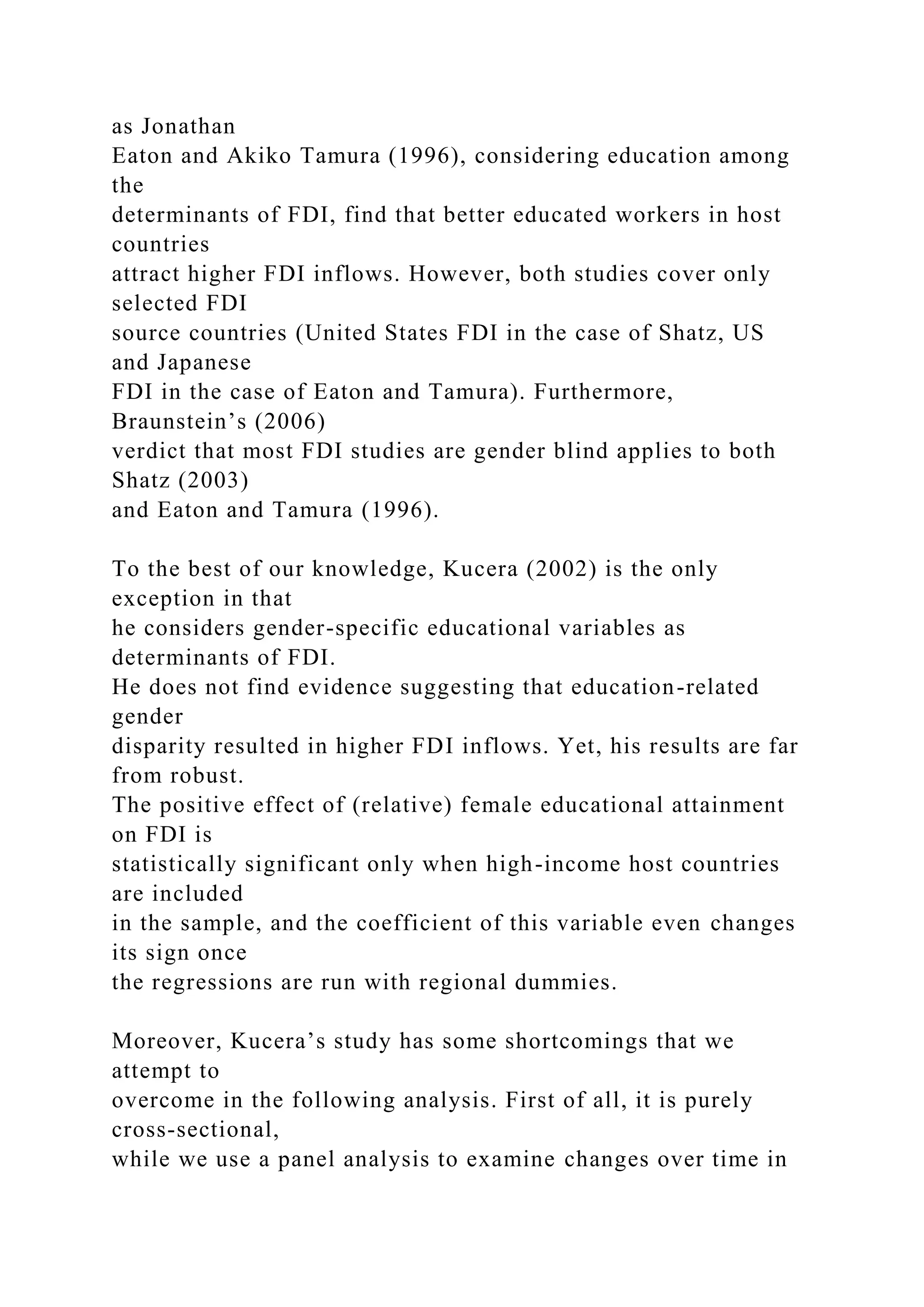
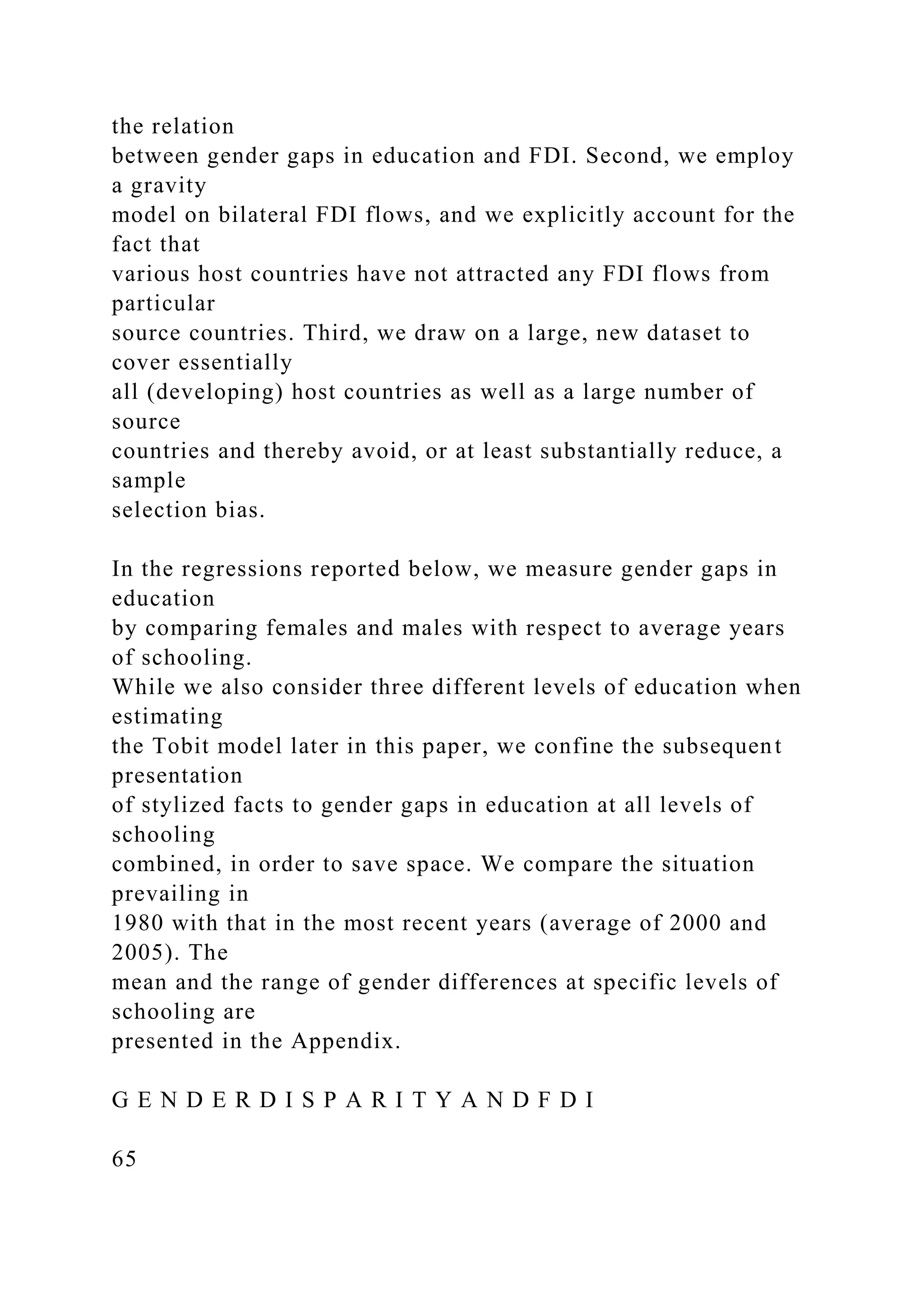

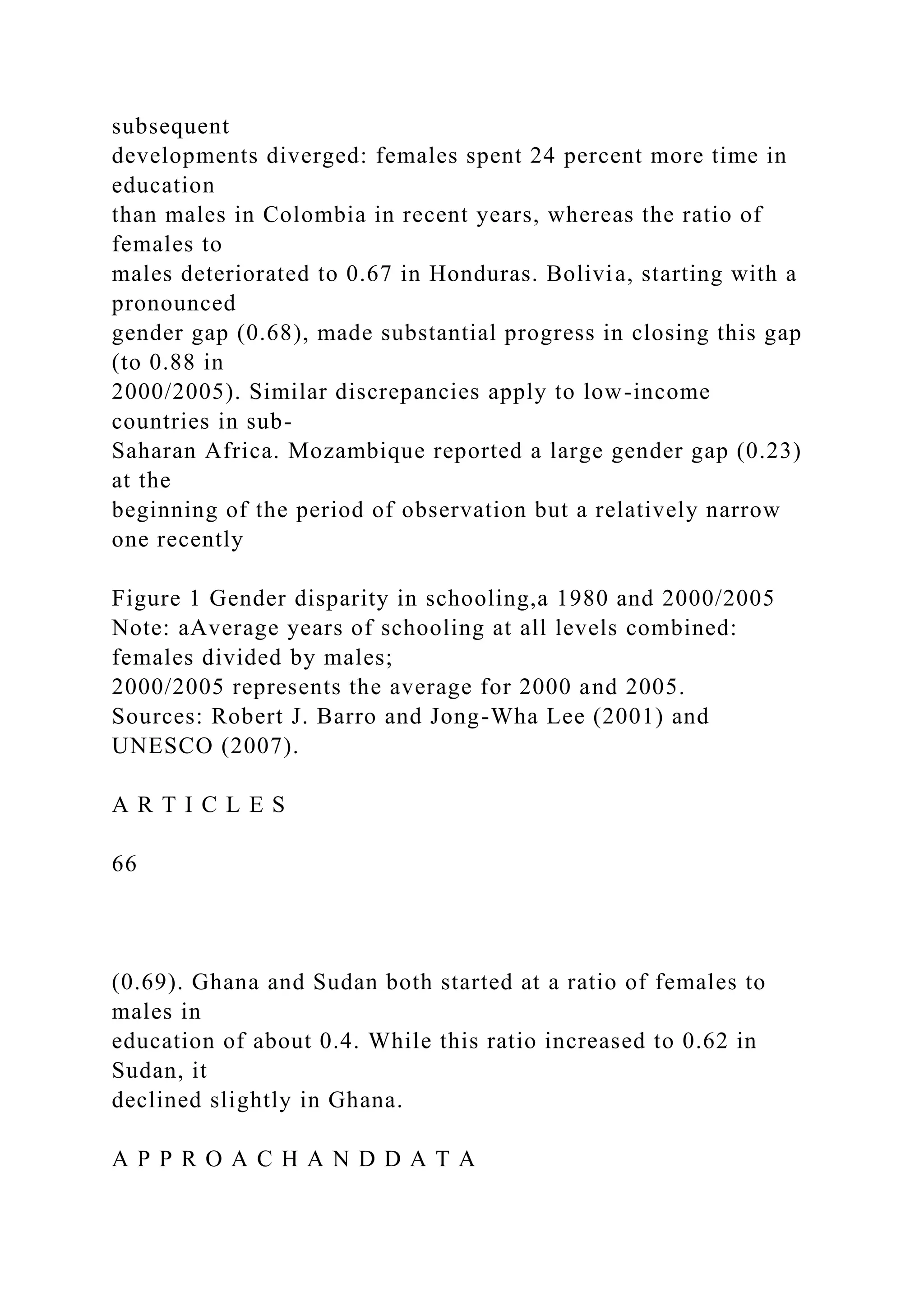
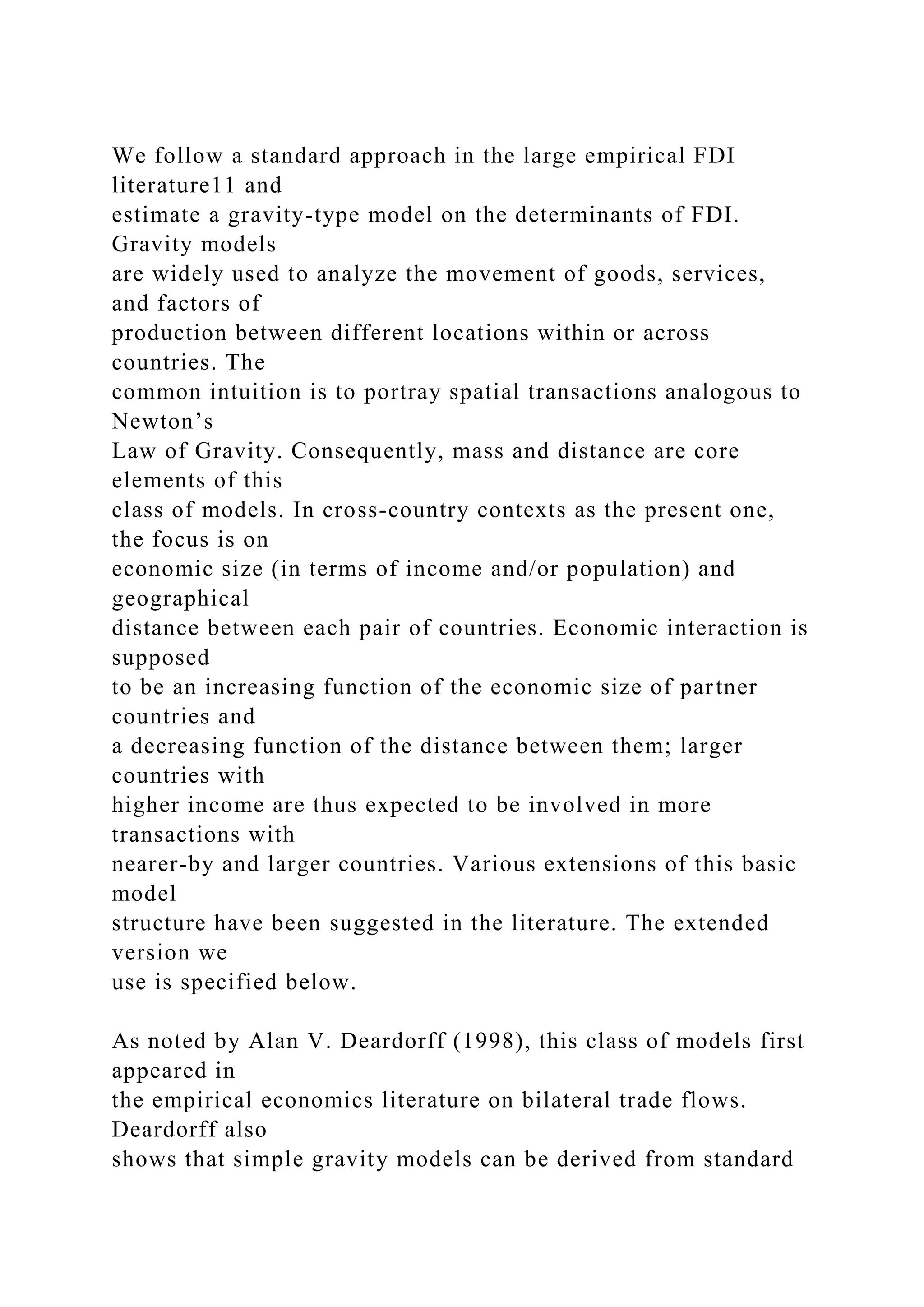
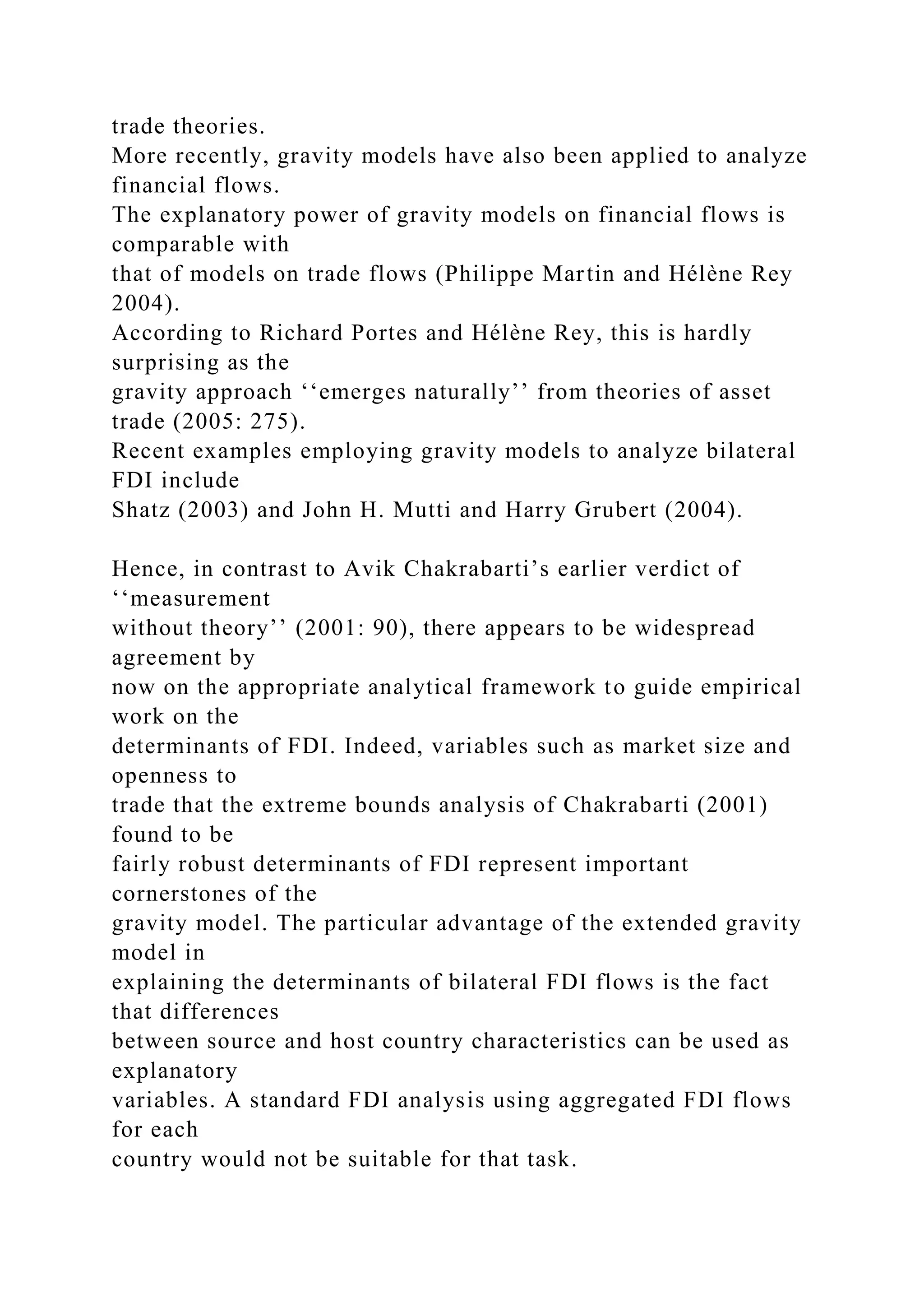
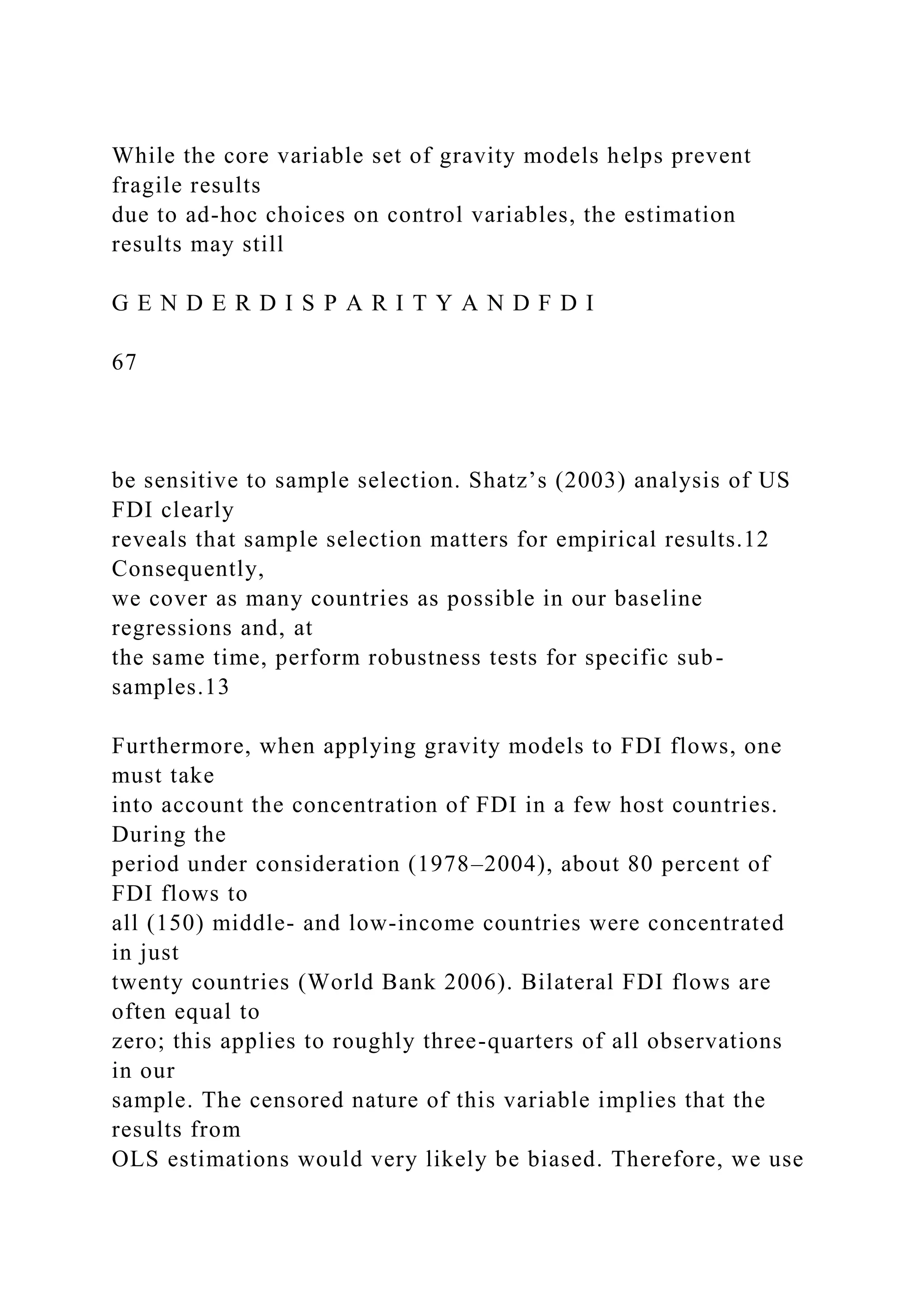
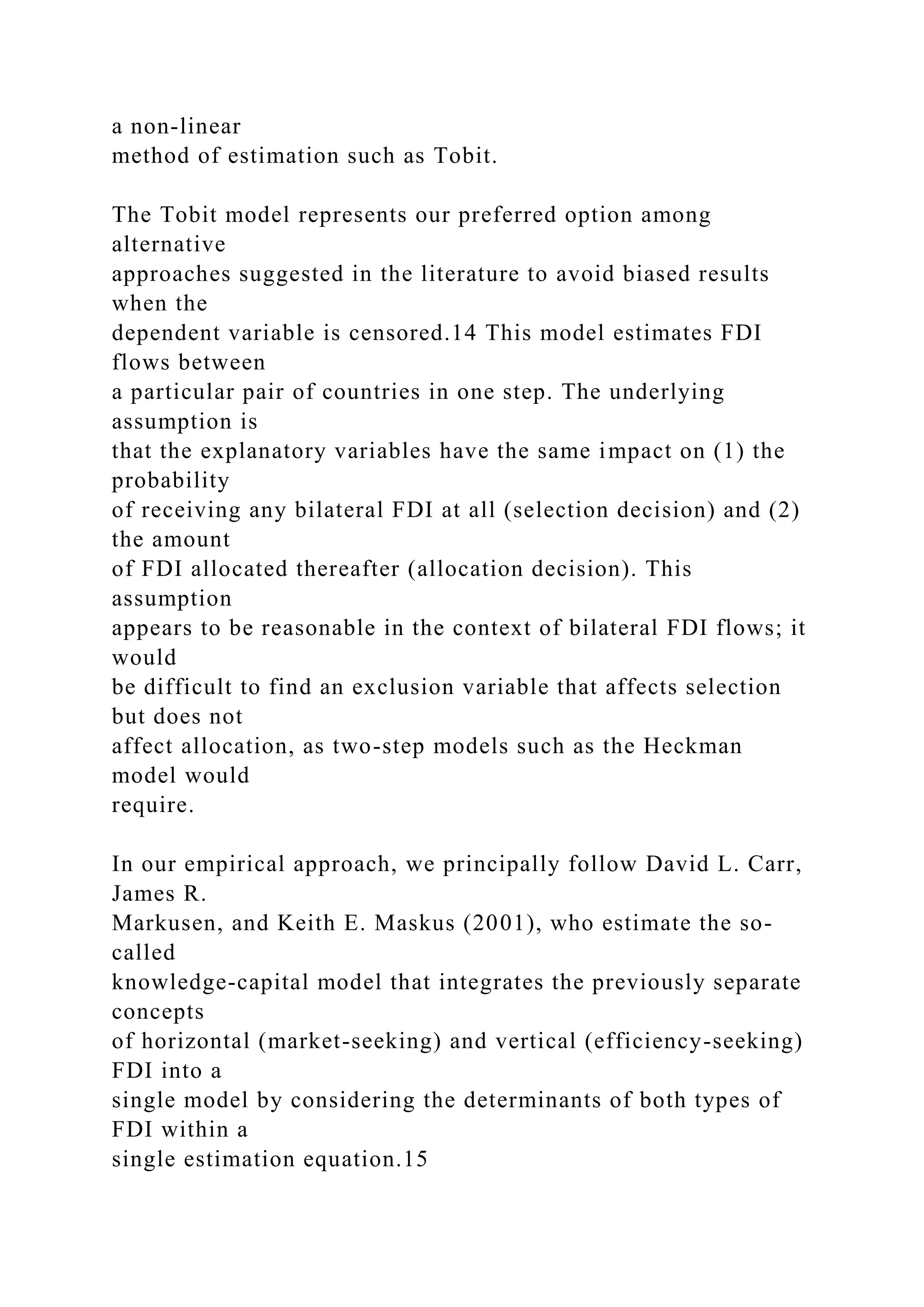

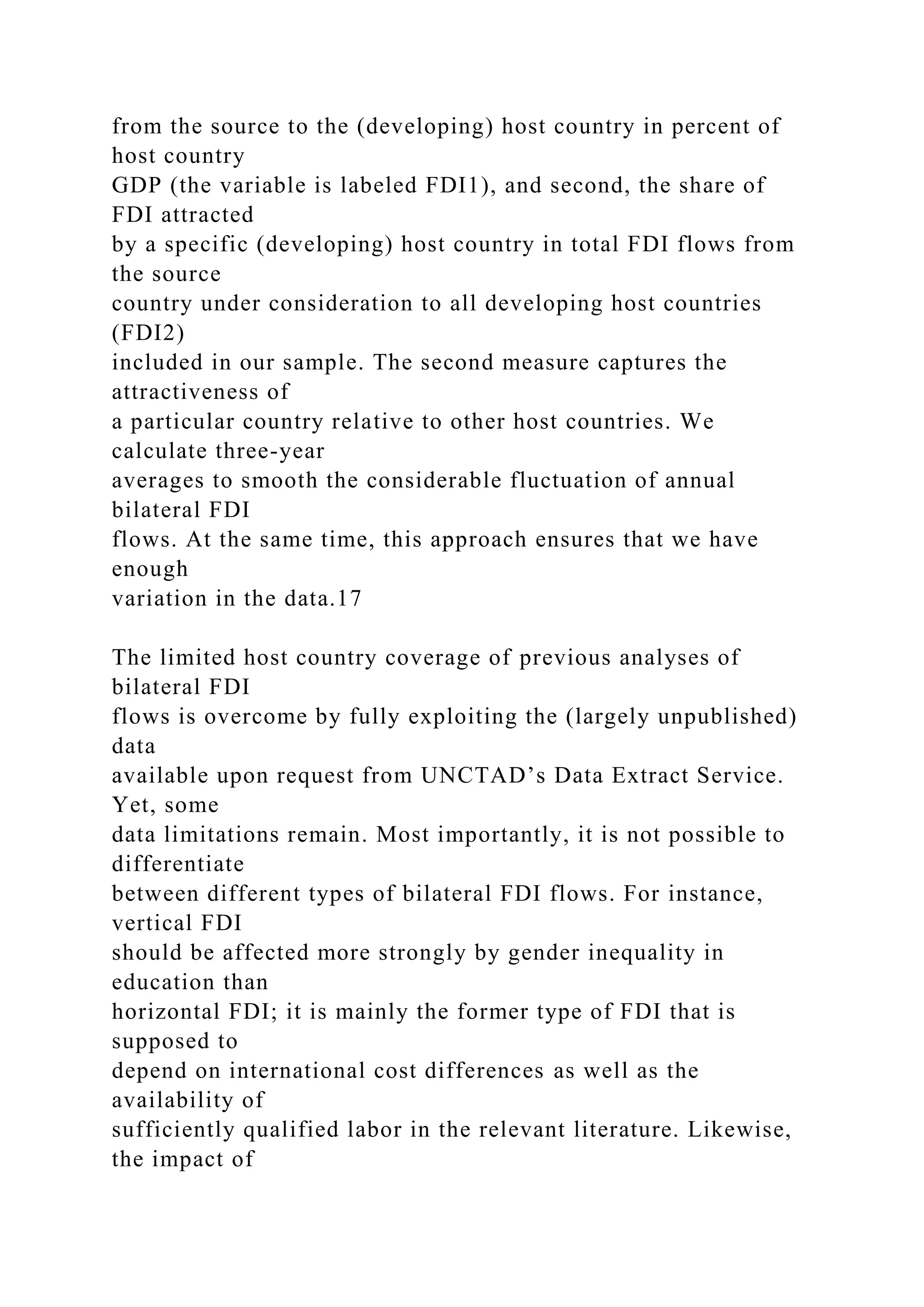

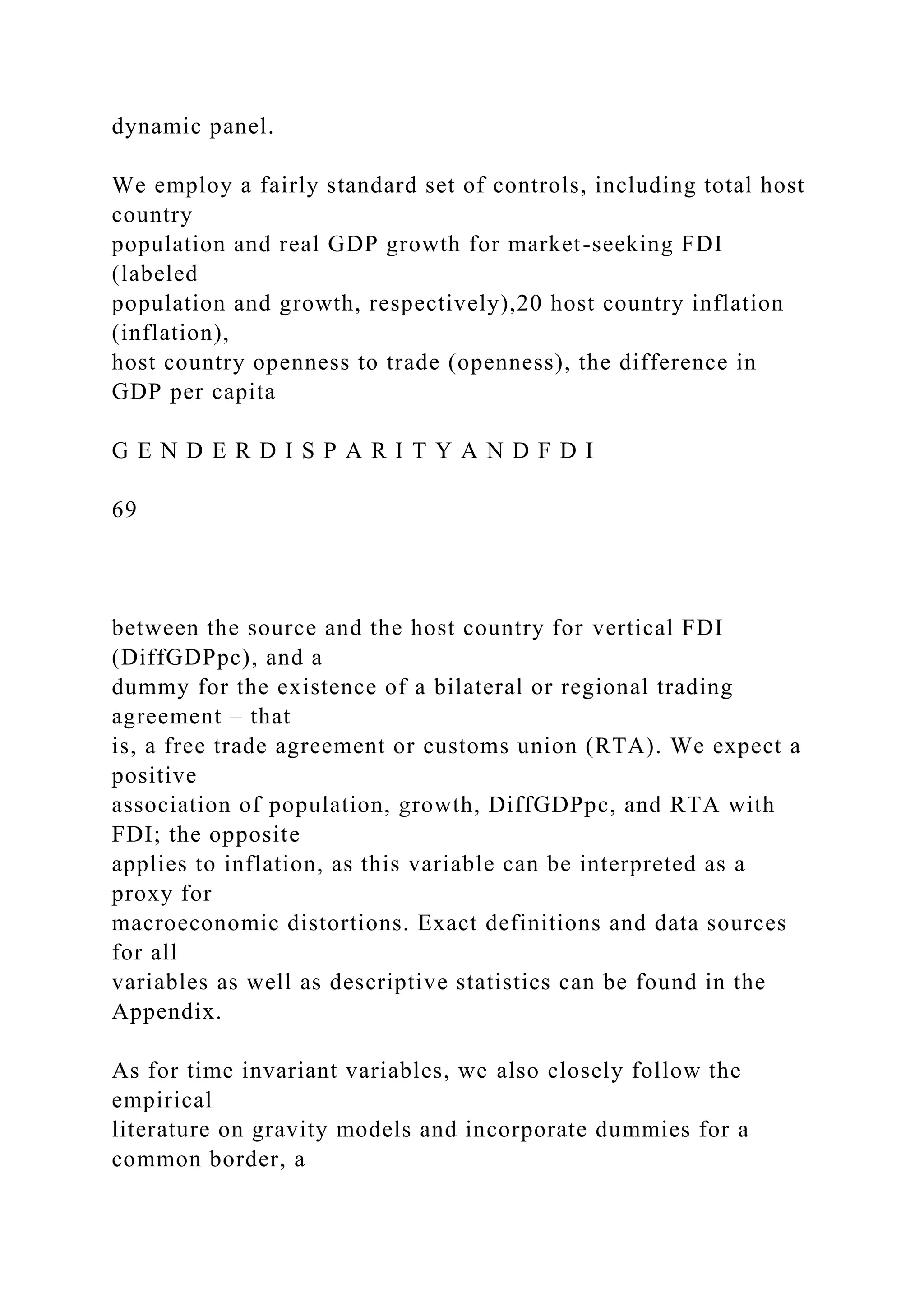

![the values of x pass from a linear scale at small absolute values to a logarithmic scale at large values. In addition to these standard control variables, we include the institutional development of host countries, proxied by political constraints on the executive branch (political constraints). Poor institutions may discourage FDI by giving rise to uncertainty (for example, with respect to the protection of property rights [Jeong-Yeon Lee and Edwin Mansfield 1996; Witold J. Henisz 2000]) and additional costs (for example, in the case of corruption [Shang-Jin Wei 2000]). We use the index for political constraints that was developed by Henisz (2000). In contrast to alternative institutional indicators, this variable is available for a large number of countries and years. Political constraints focuses on the political discretion of the executive branch. Less discretion is supposed to render credible commitments to (foreign) investors more likely. The indicator ranges from zero (total political discretion) to one (no political discretion). Thus, we expect a positive link between political constraints and FDI flows. Finally, we include two variables that control for investment liberalization: (1) CapOpen A R T I C L E S](https://image.slidesharecdn.com/week1databasesandsecuritylessondatabasesandsecurity-221119031308-df83ee2c/75/WEEK-1-Databases-and-SecurityLesson-Databases-and-Security-docx-29-2048.jpg)
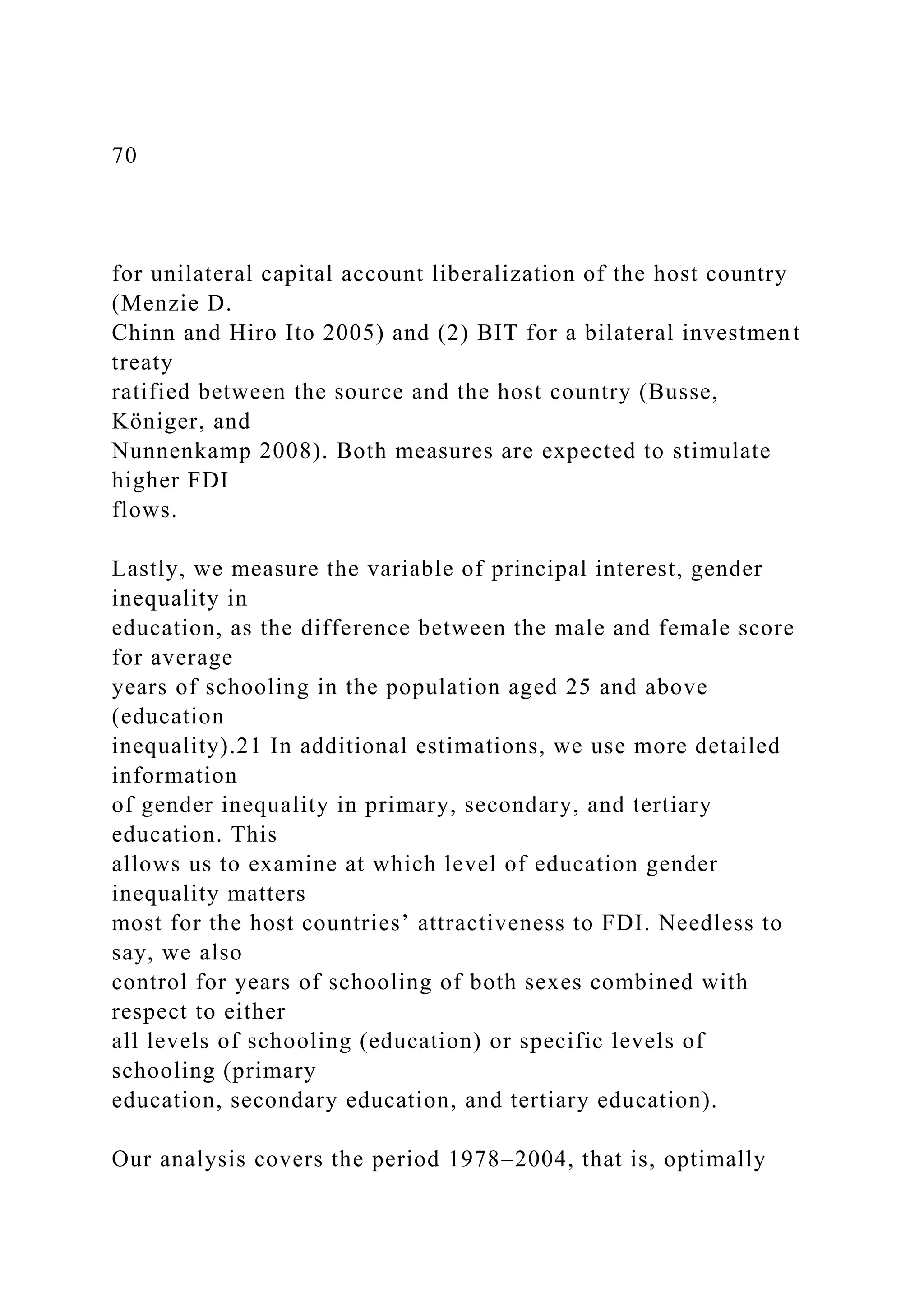

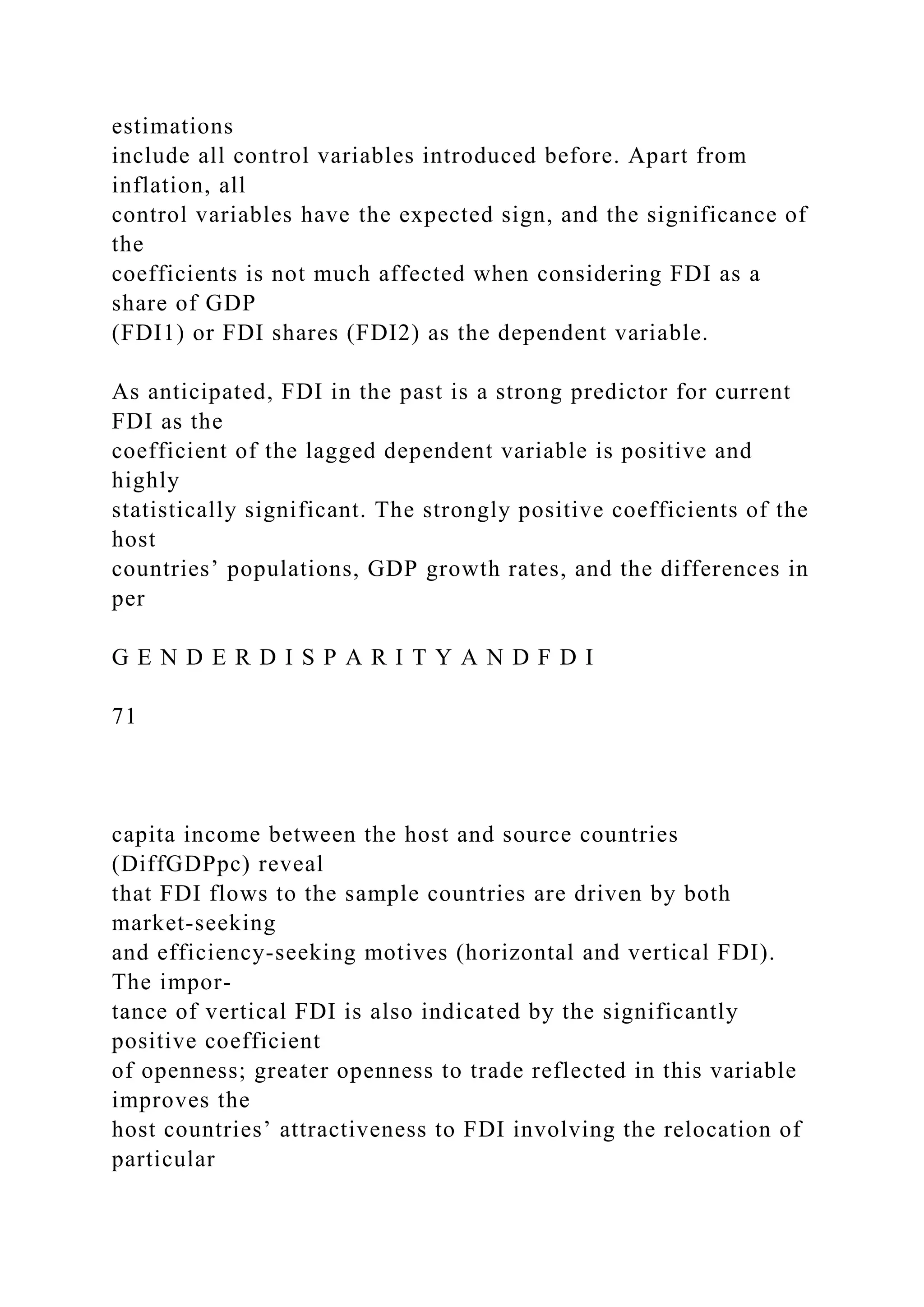
![segments of the value chain and the offshoring of intermediate produc- tion.24 Likewise, less regulated capital transactions are associated with higher bilateral FDI flows, as the coefficient of CapOpen is positive and significant at the 1 percent level. Apart from colonial ties in one specification, all the time- invariant variables traditionally included in gravity models turn out to be statistically significant at the 5 percent level. Bilateral FDI flows between a source and a host country having a common border or speaking the same language are higher than bilateral flows between countries without such common characteristics. The same applies for colonial ties (except column [2]). By contrast, a larger distance between the host and the source country tends to reduce bilateral FDI flows. Distance-related management and transport costs outweigh the source country’s incentive to undertake FDI in remote countries and serve these markets through local production. Table 1 FDI and education, total years of schooling (1) (2) Dependent variable ln (FDIl) ln (FDI2) ln (FDIt-1) 0.299*** (0.012) 0.619*** (0.020) Education 0.108*** (0.021) 0.035*** (0.005) Education inequality -0.128*** (0.043) -0.050*** (0.009)](https://image.slidesharecdn.com/week1databasesandsecuritylessondatabasesandsecurity-221119031308-df83ee2c/75/WEEK-1-Databases-and-SecurityLesson-Databases-and-Security-docx-33-2048.jpg)

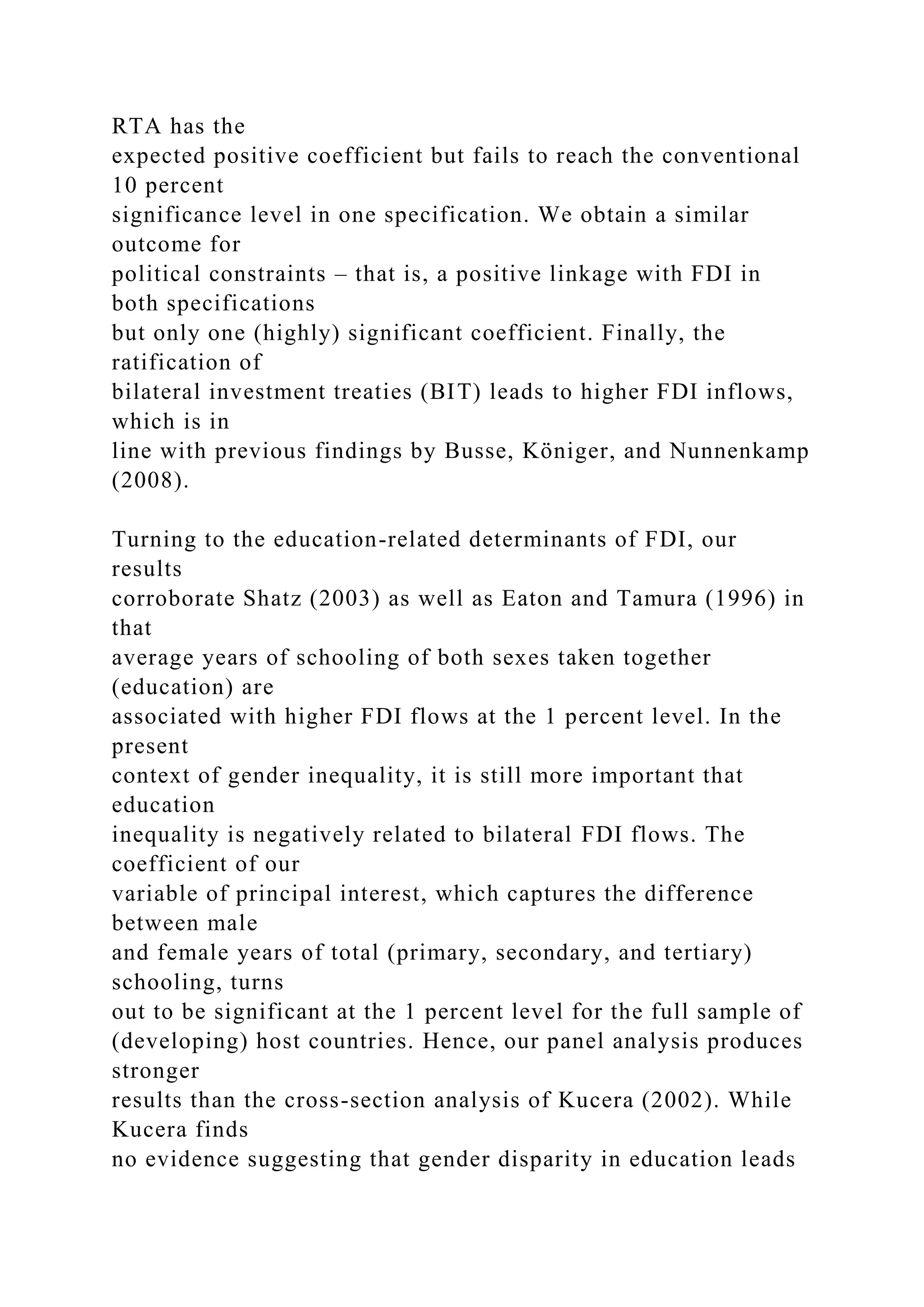

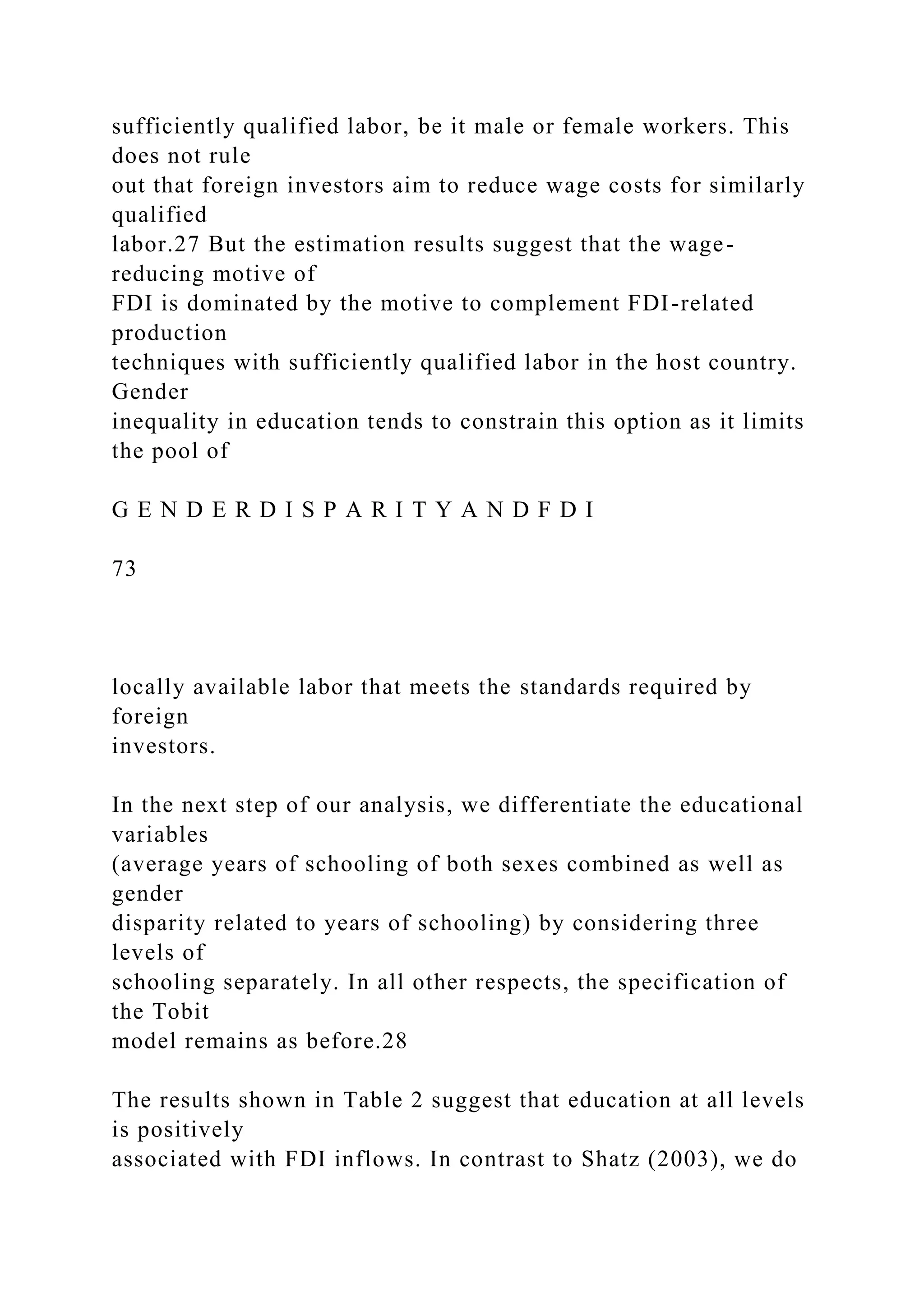
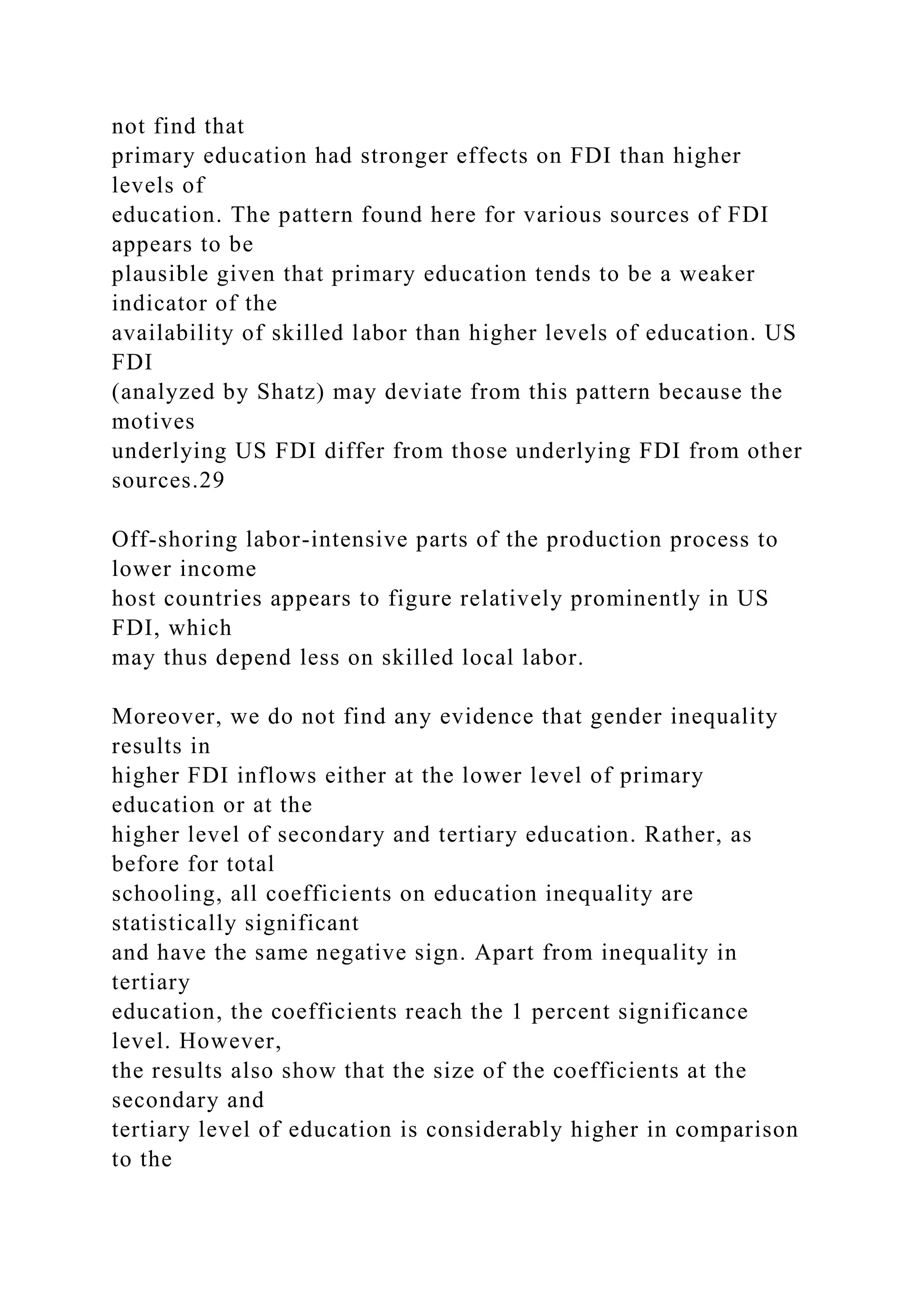
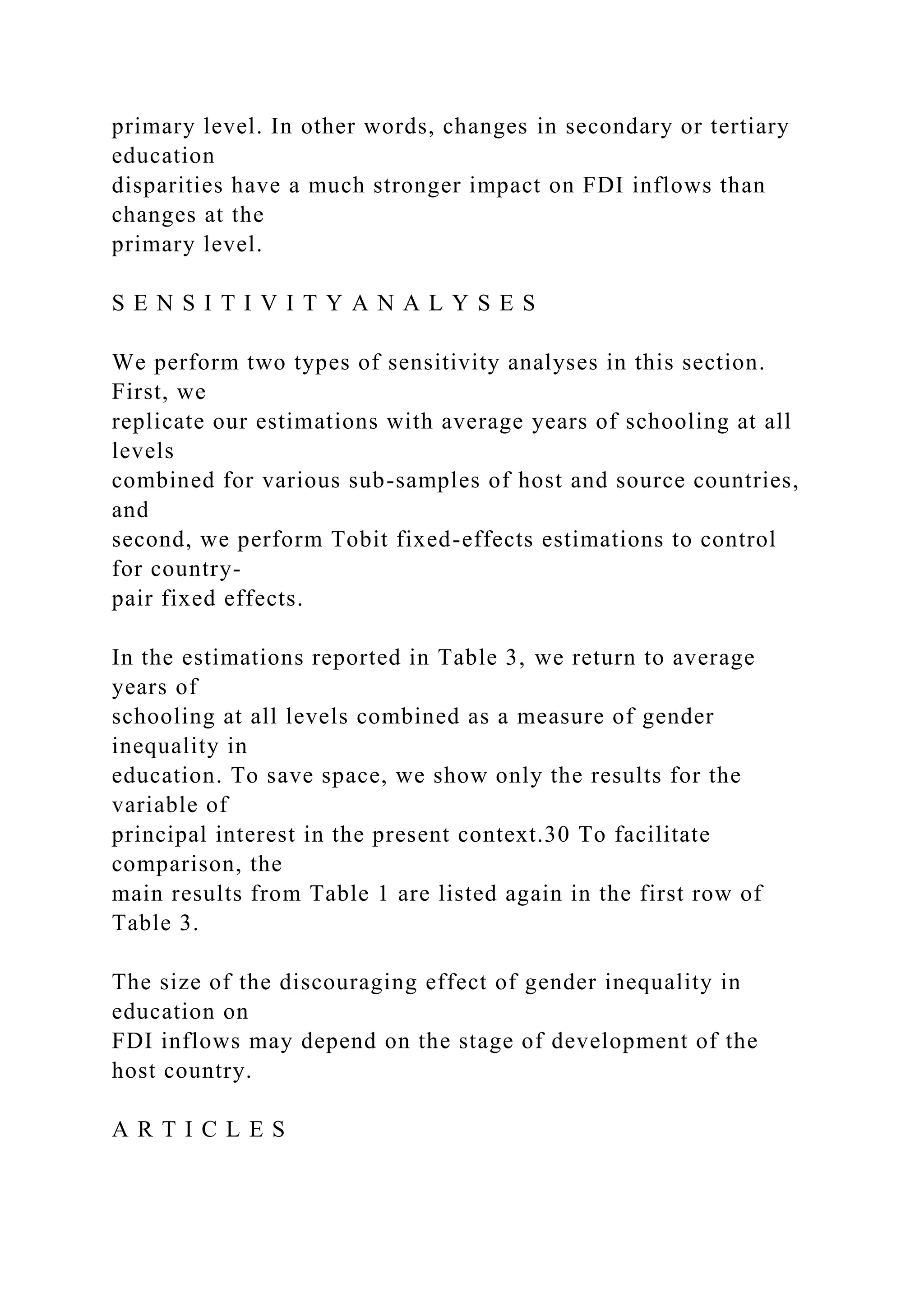





























































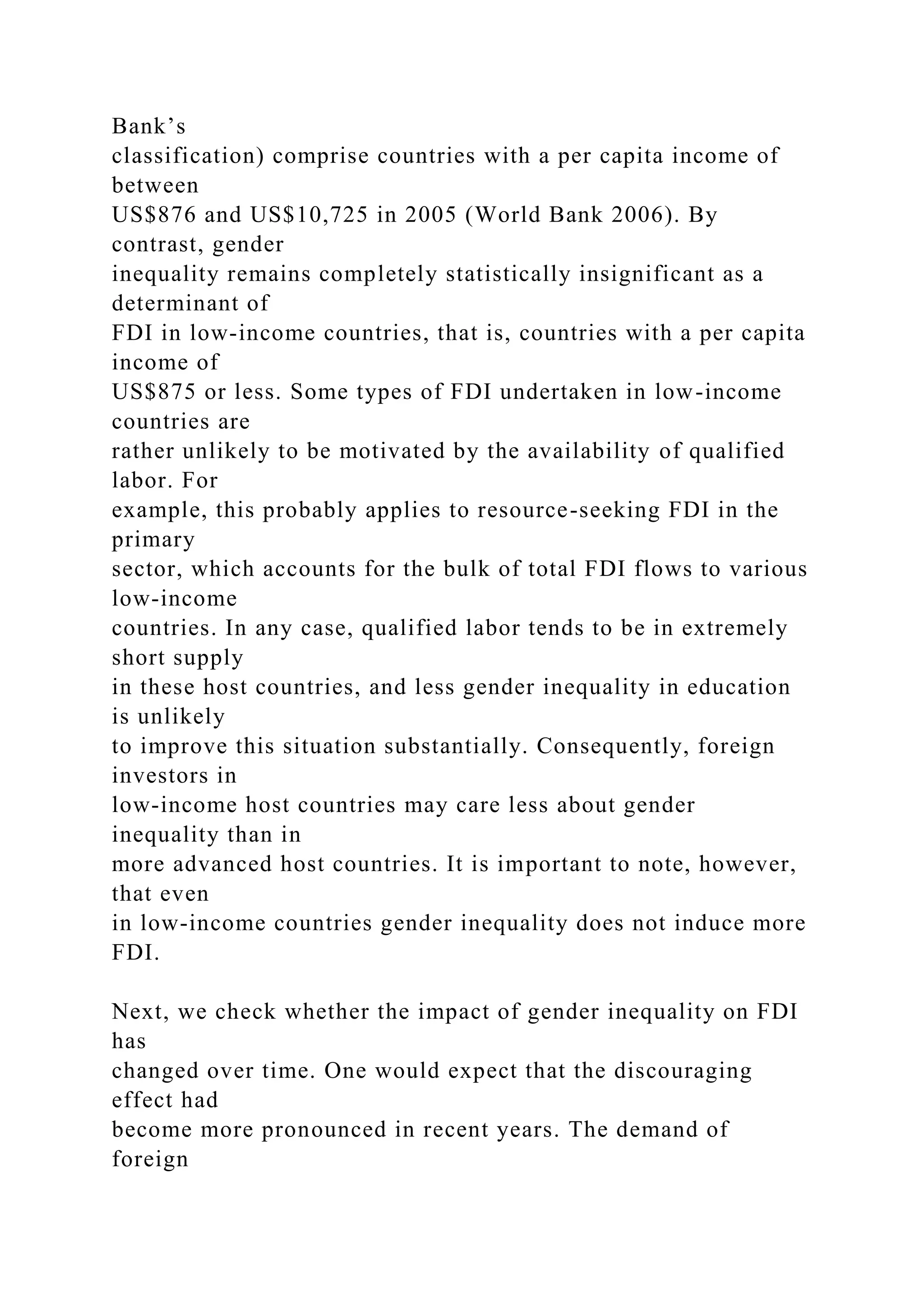
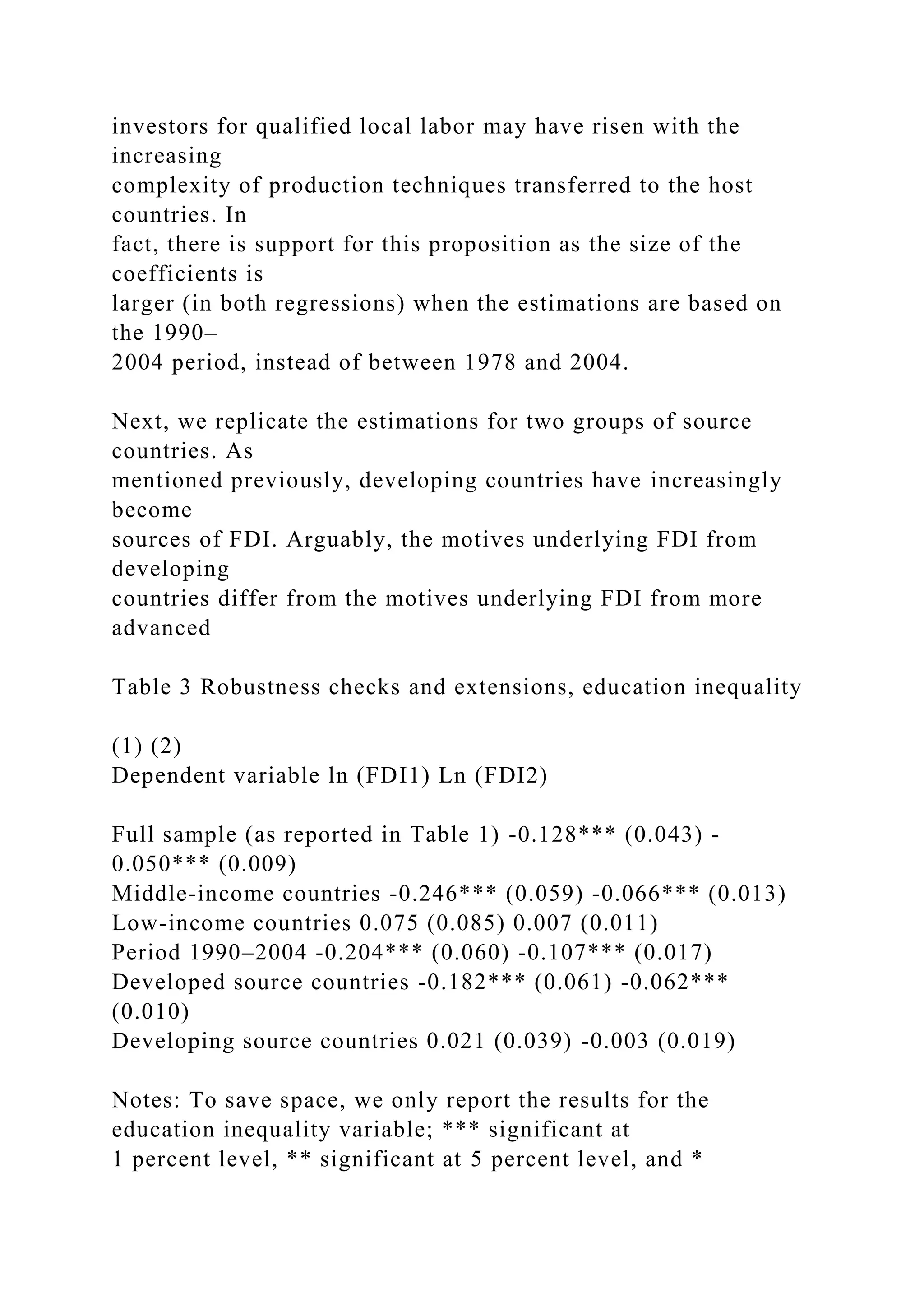
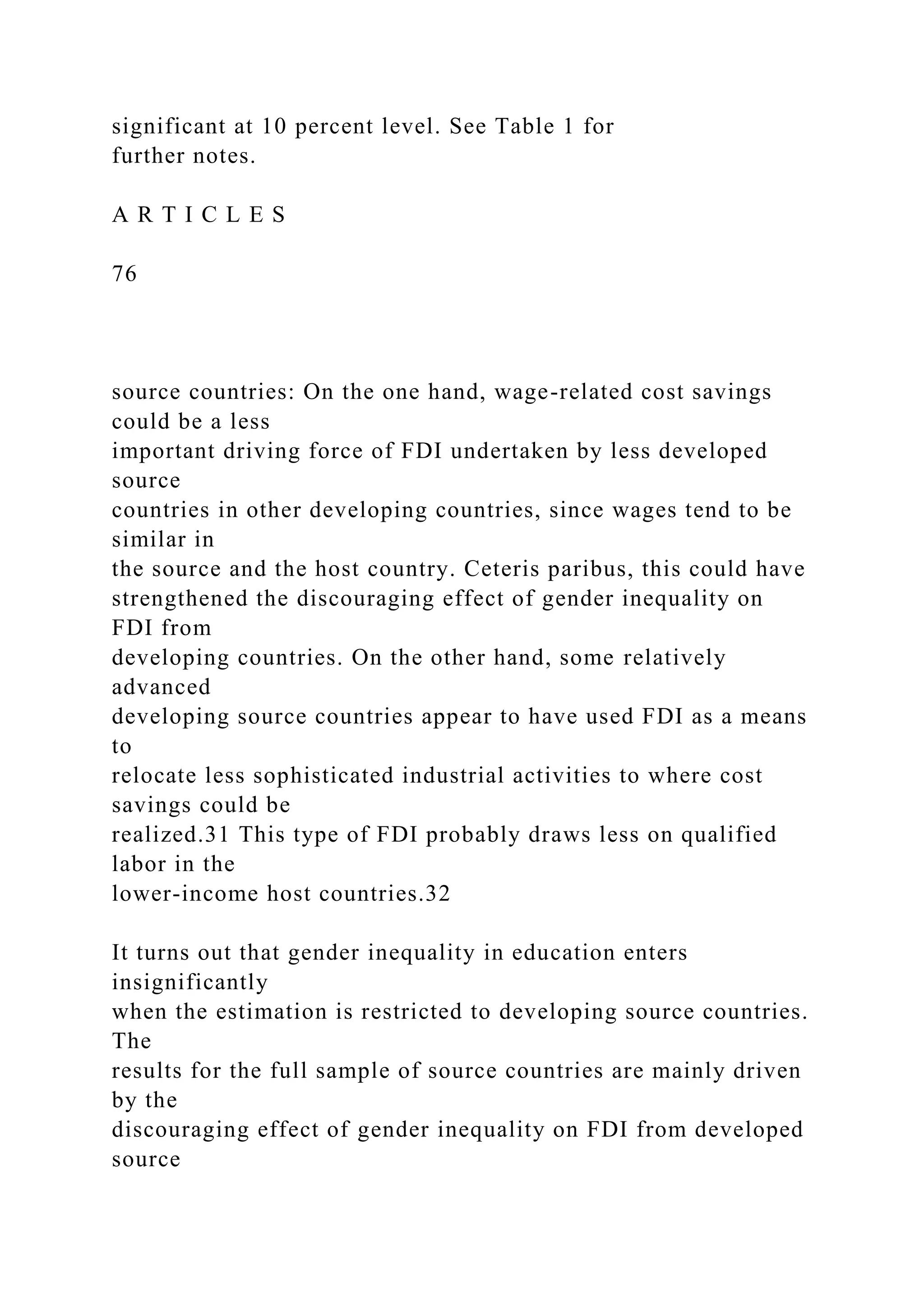
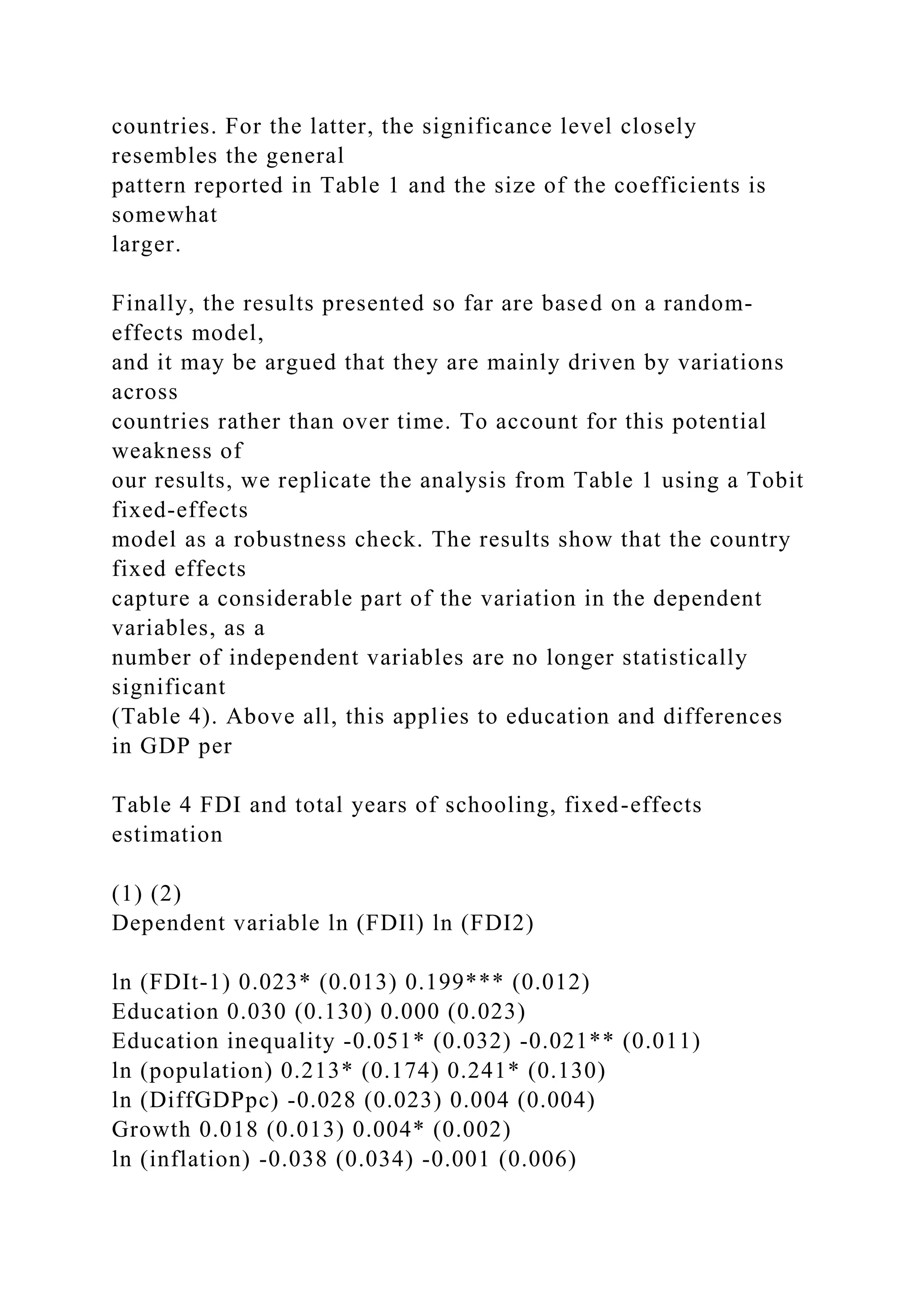
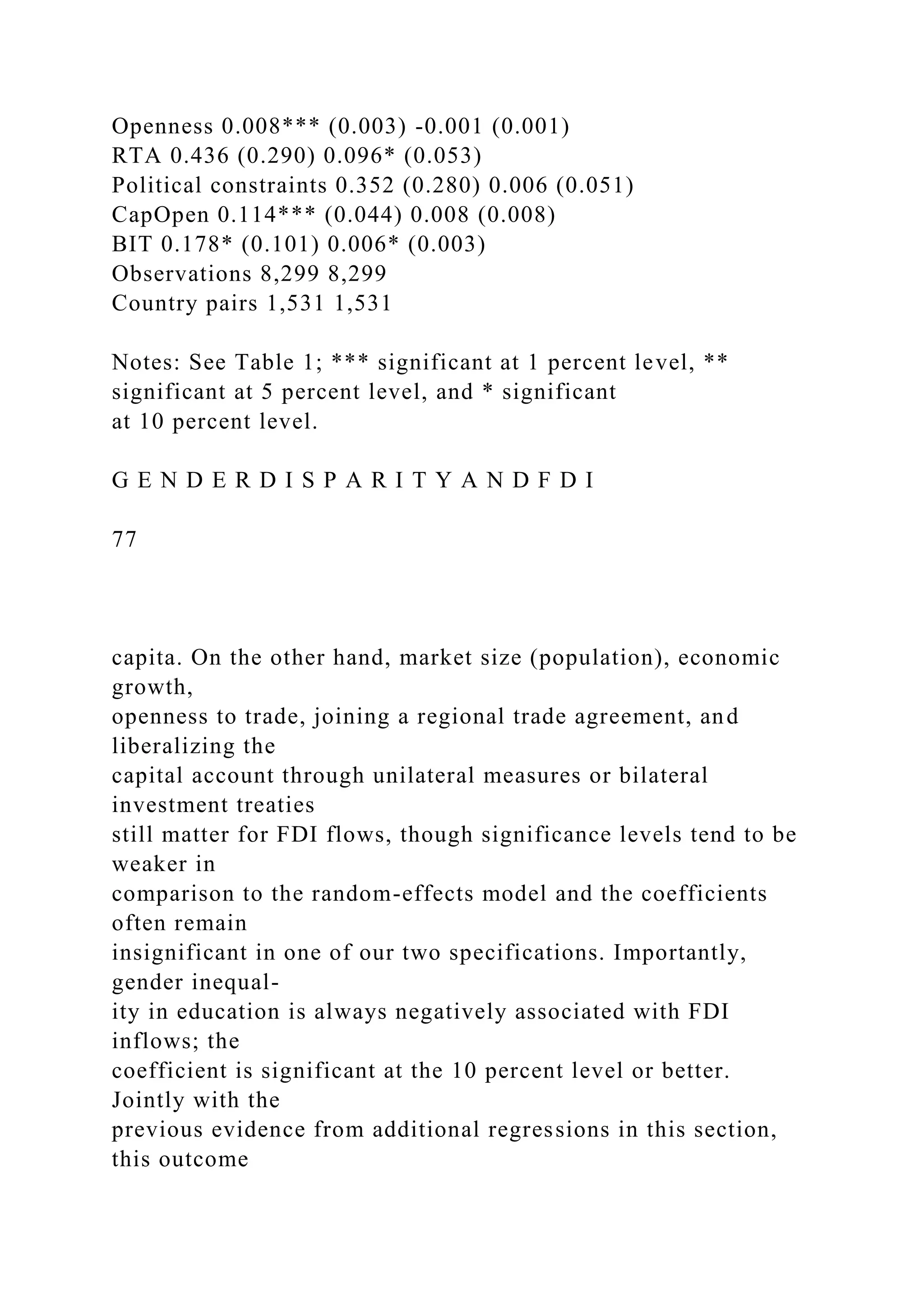
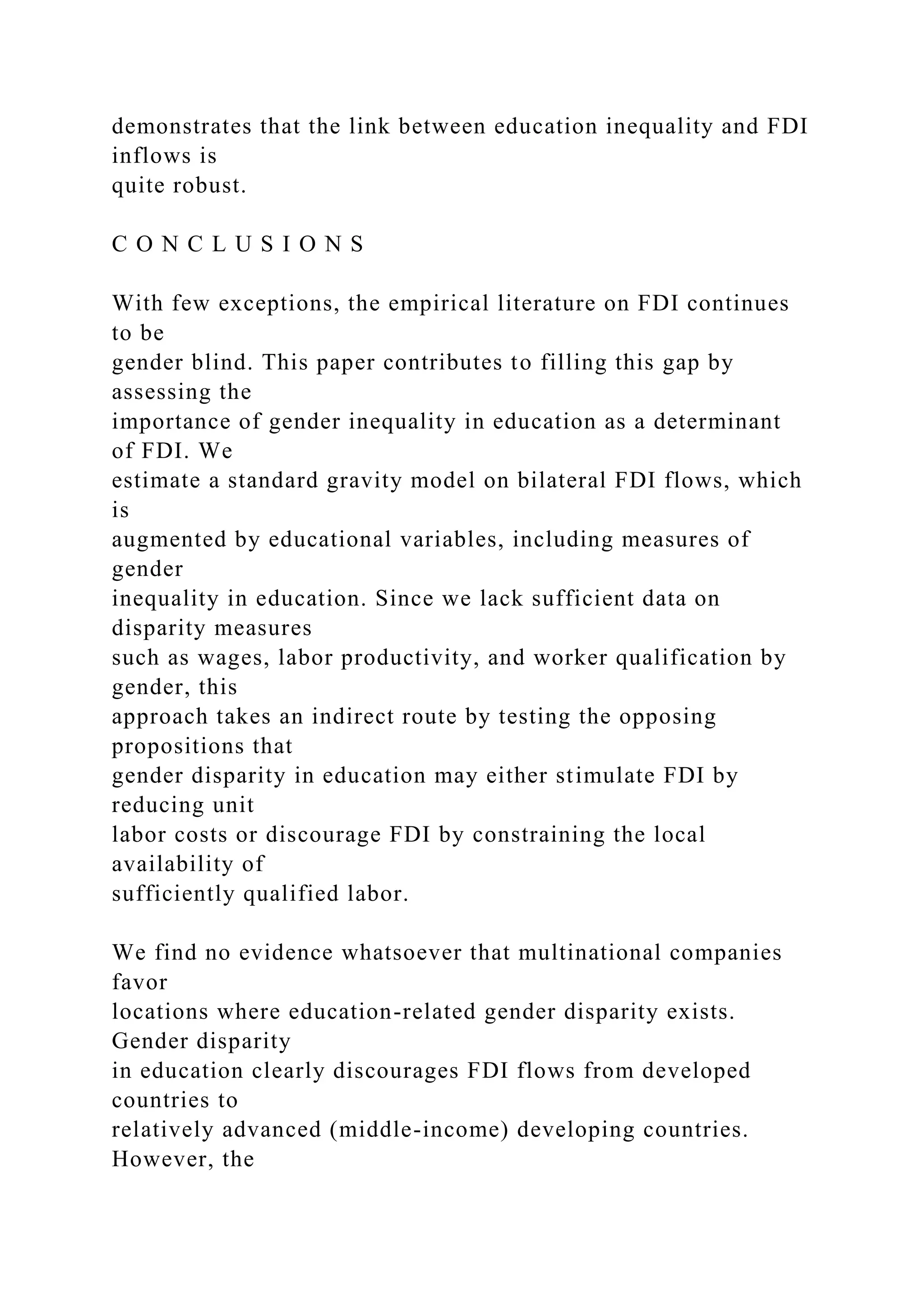


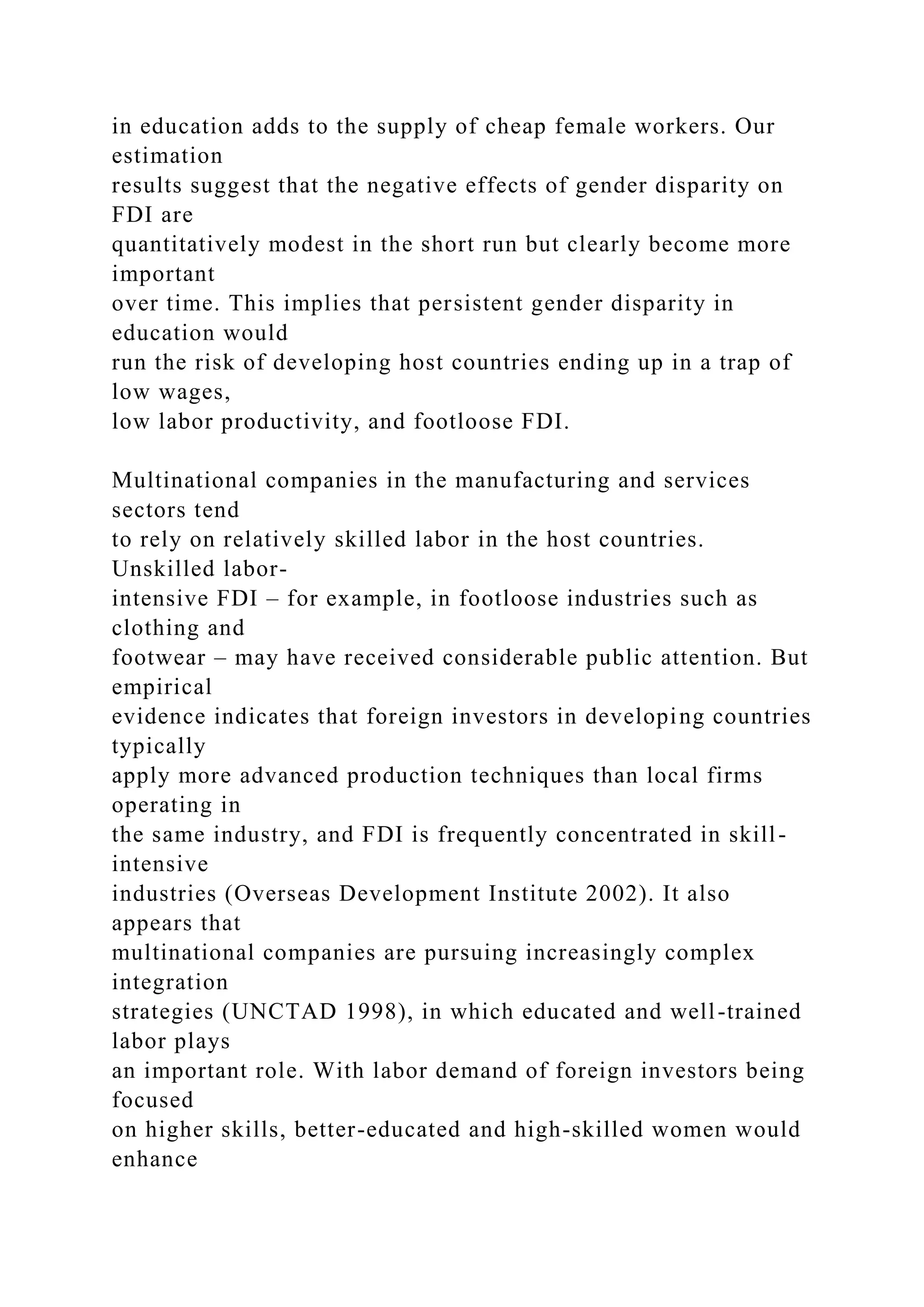
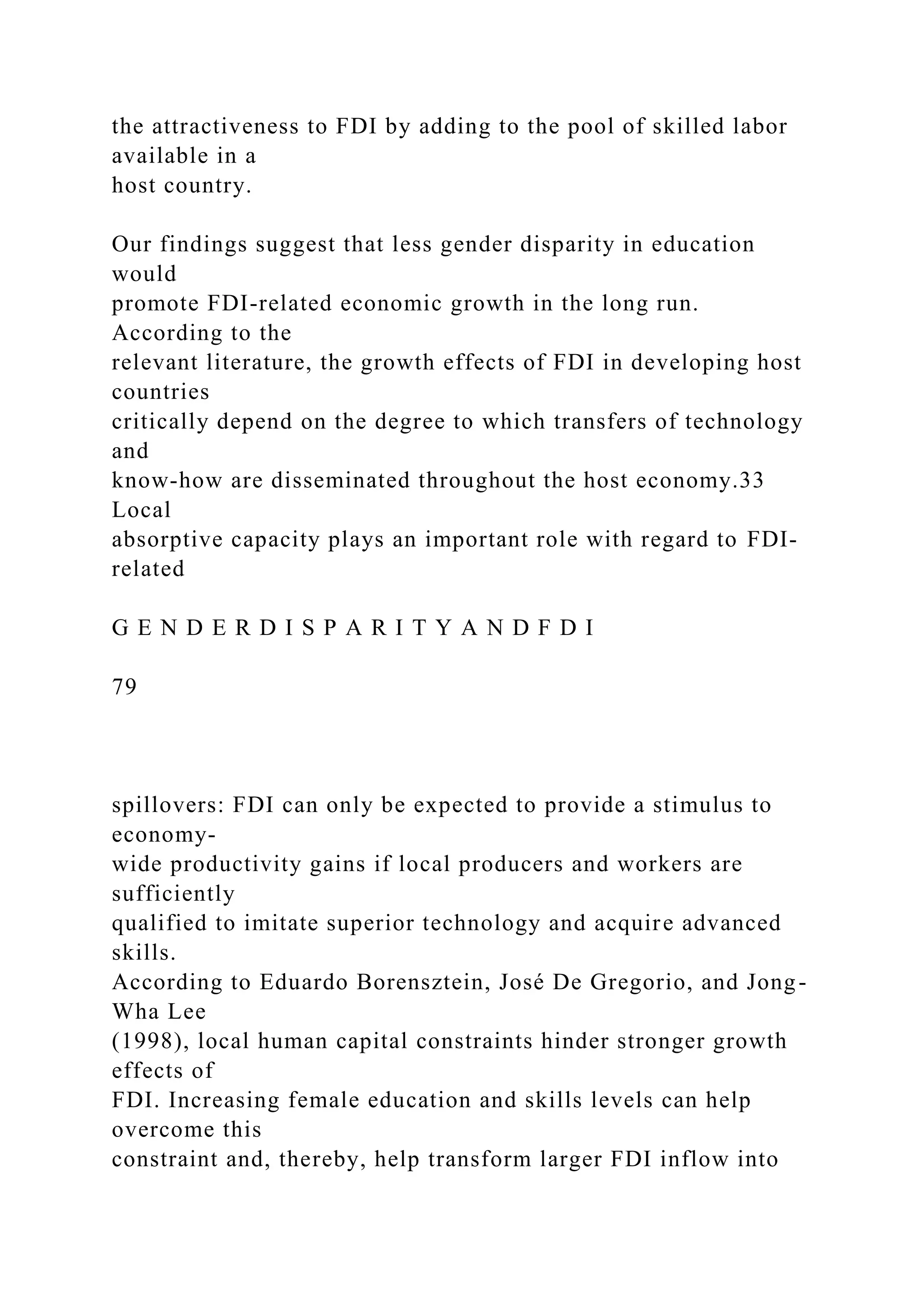
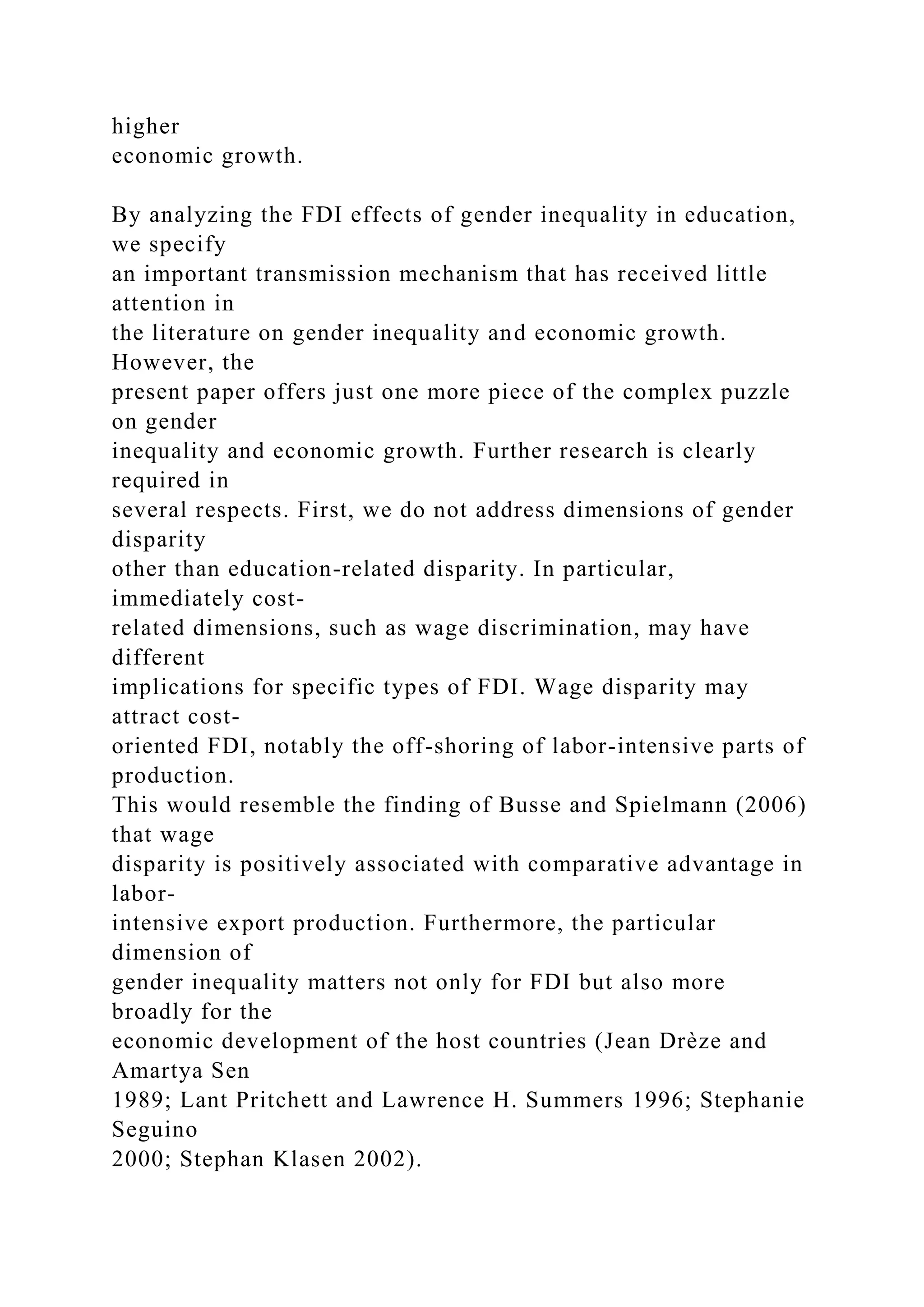
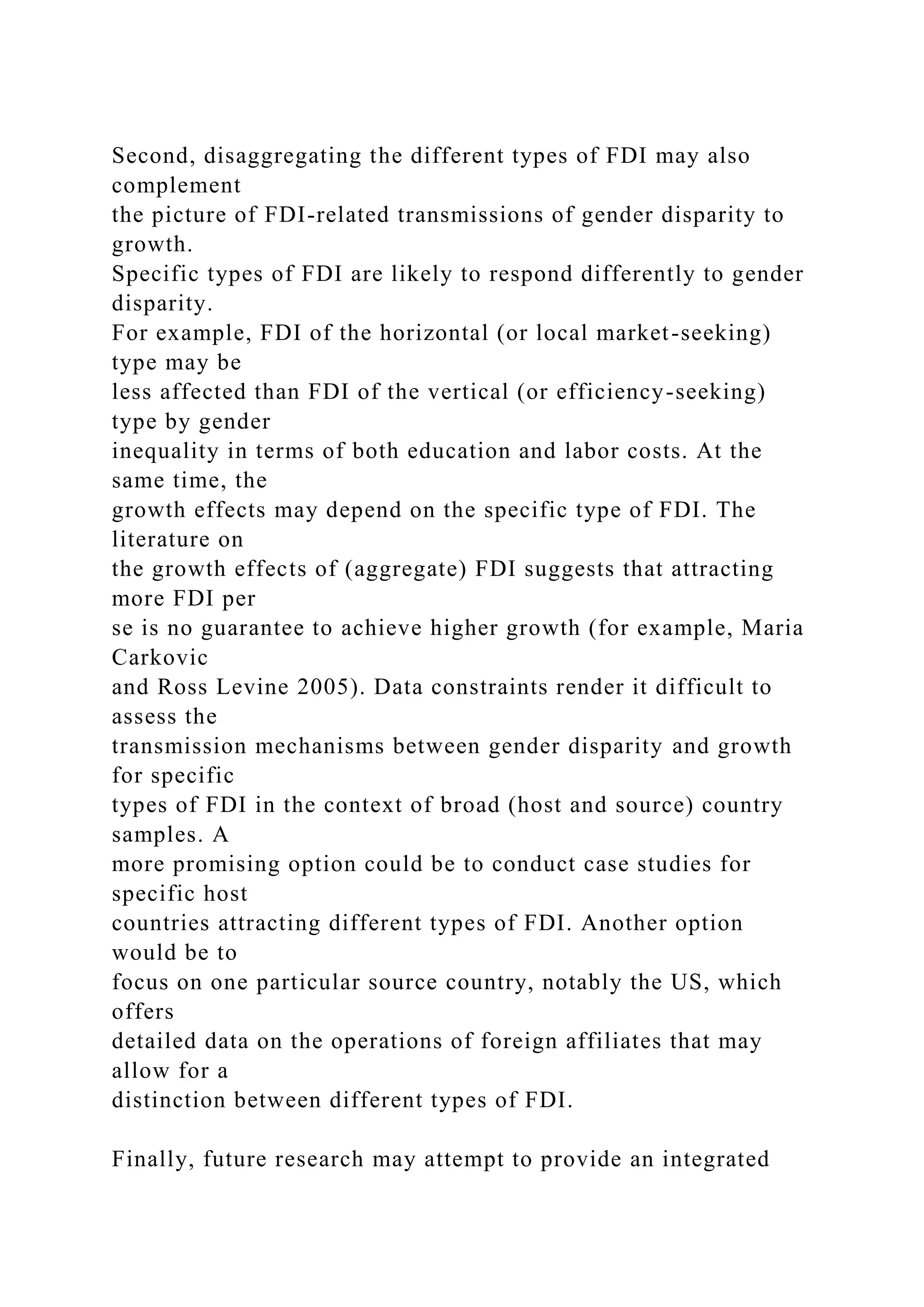
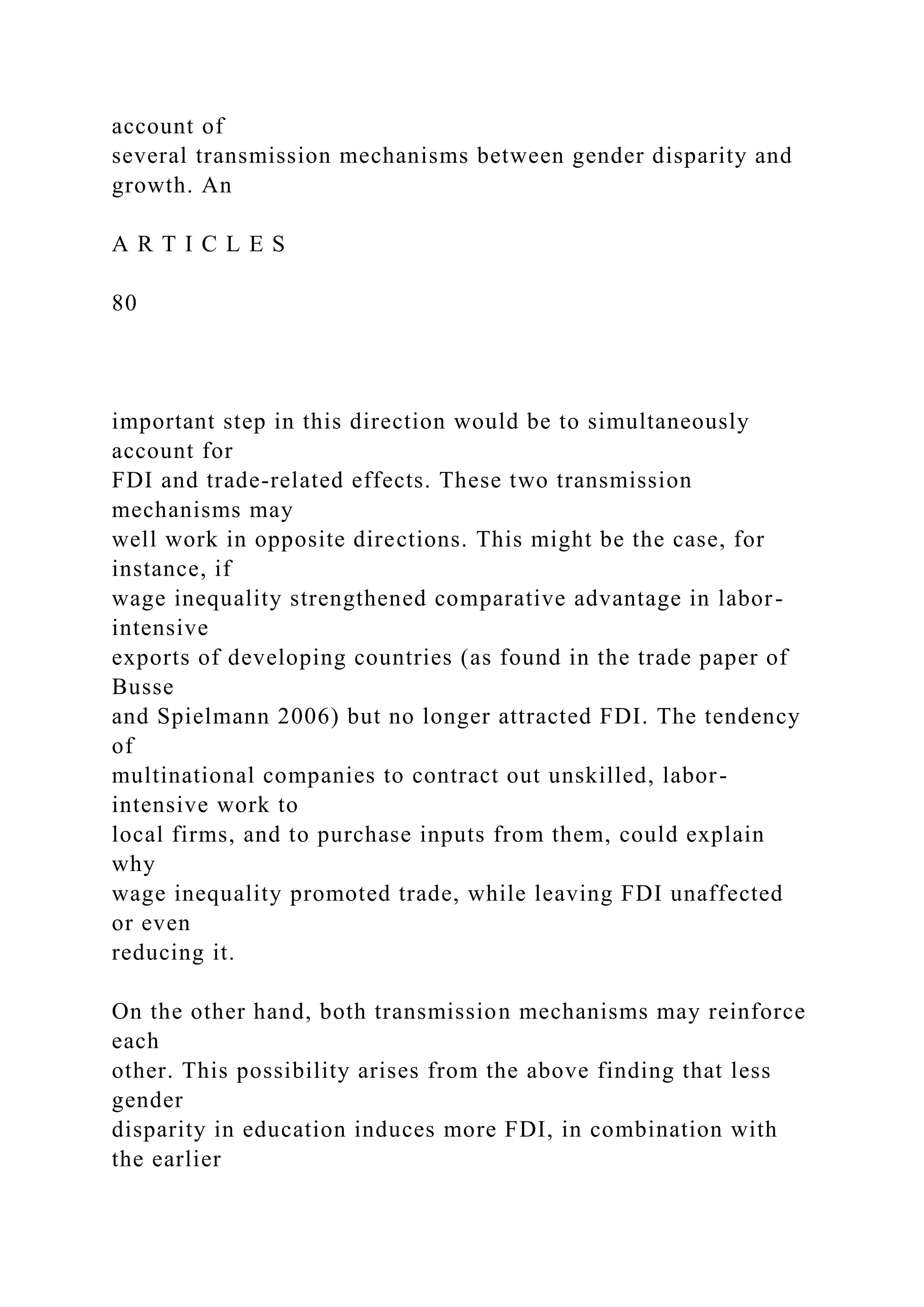
![finding of Busse and Spielmann (2006) that less gender disparity in education is positively associated with comparative advantage in labor- intensive exports. From a gender perspective, the equity and fairness implications of such a scenario would still remain unresolved. It would have to be assessed whether and to what extent wage discrimination is underlying the positive export and FDI effects of less gender disparity in education. In other words, overcoming gender disparity in education and reaping any ensuing trade and FDI benefits may come at the cost of violating other dimensions of gender equity, such as wage equity. Matthias Busse, Hamburg Institute of International Economics (HWWI) Heimhuder Str. 71, Hamburg, 20148, Germany e-mail: [email protected] Peter Nunnenkamp, Kiel Institute for the World Economy, Duesternbrooker Weg 120, Kiel, 24100, Germany e-mail: [email protected] N O T E S 1 By contrast, Günseli Berik, Yana van der Meulen Rodgers, and Joseph E. Zveglich (2004) consider openness to trade to be a determinant of gender wage gaps, finding that trade openness is inversely related to women’s relative wages in South Korean](https://image.slidesharecdn.com/week1databasesandsecuritylessondatabasesandsecurity-221119031308-df83ee2c/75/WEEK-1-Databases-and-SecurityLesson-Databases-and-Security-docx-114-2048.jpg)


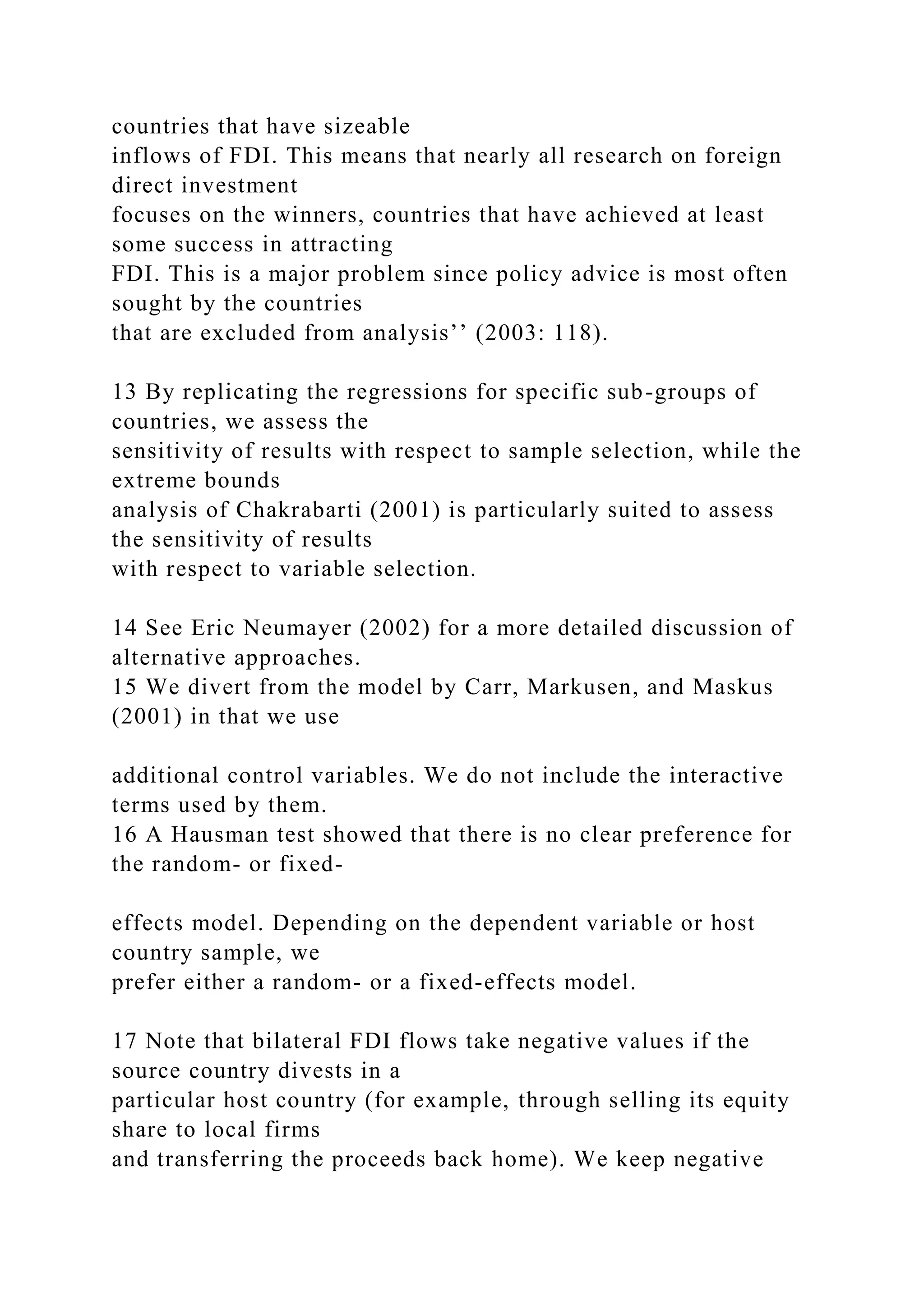
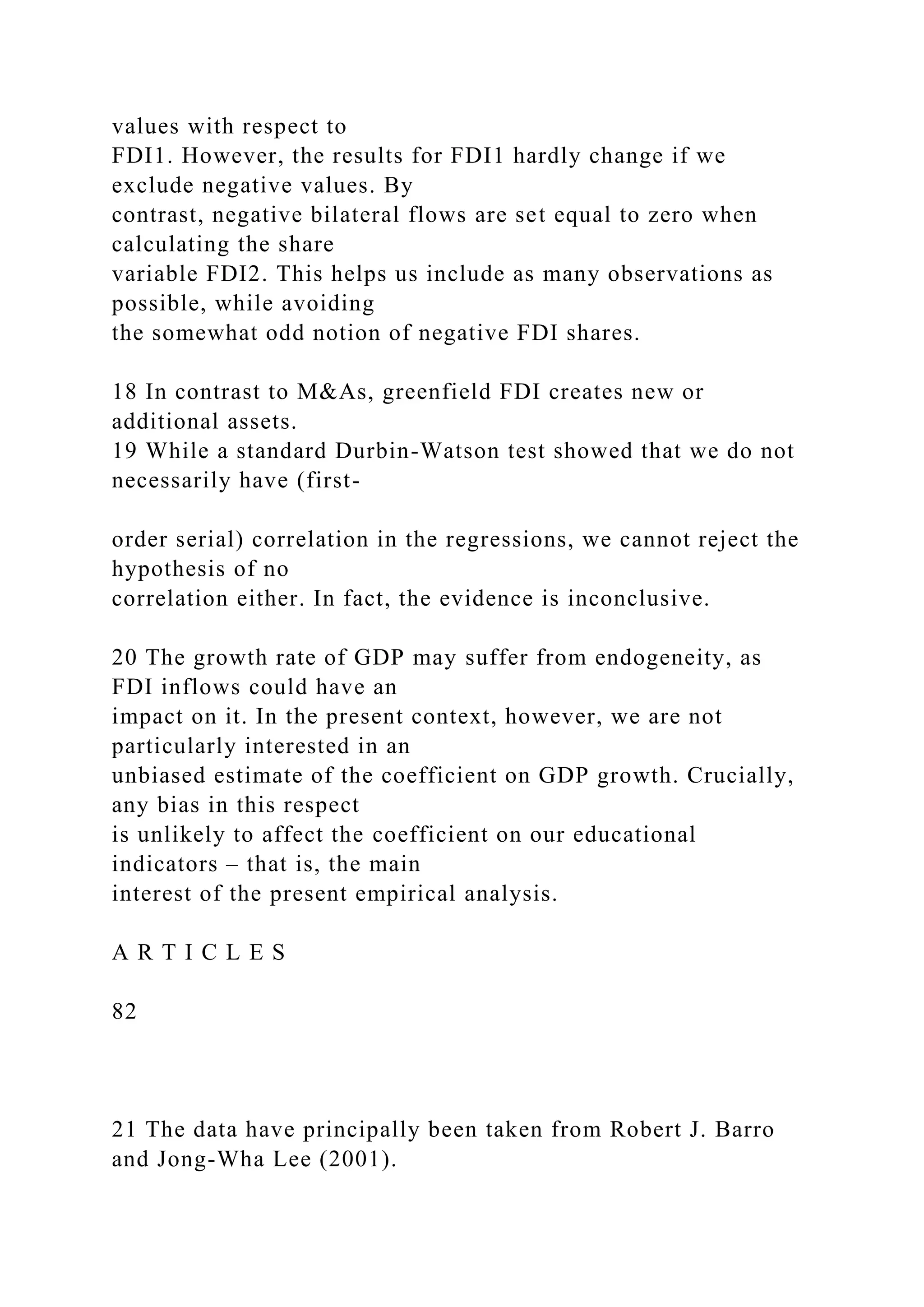
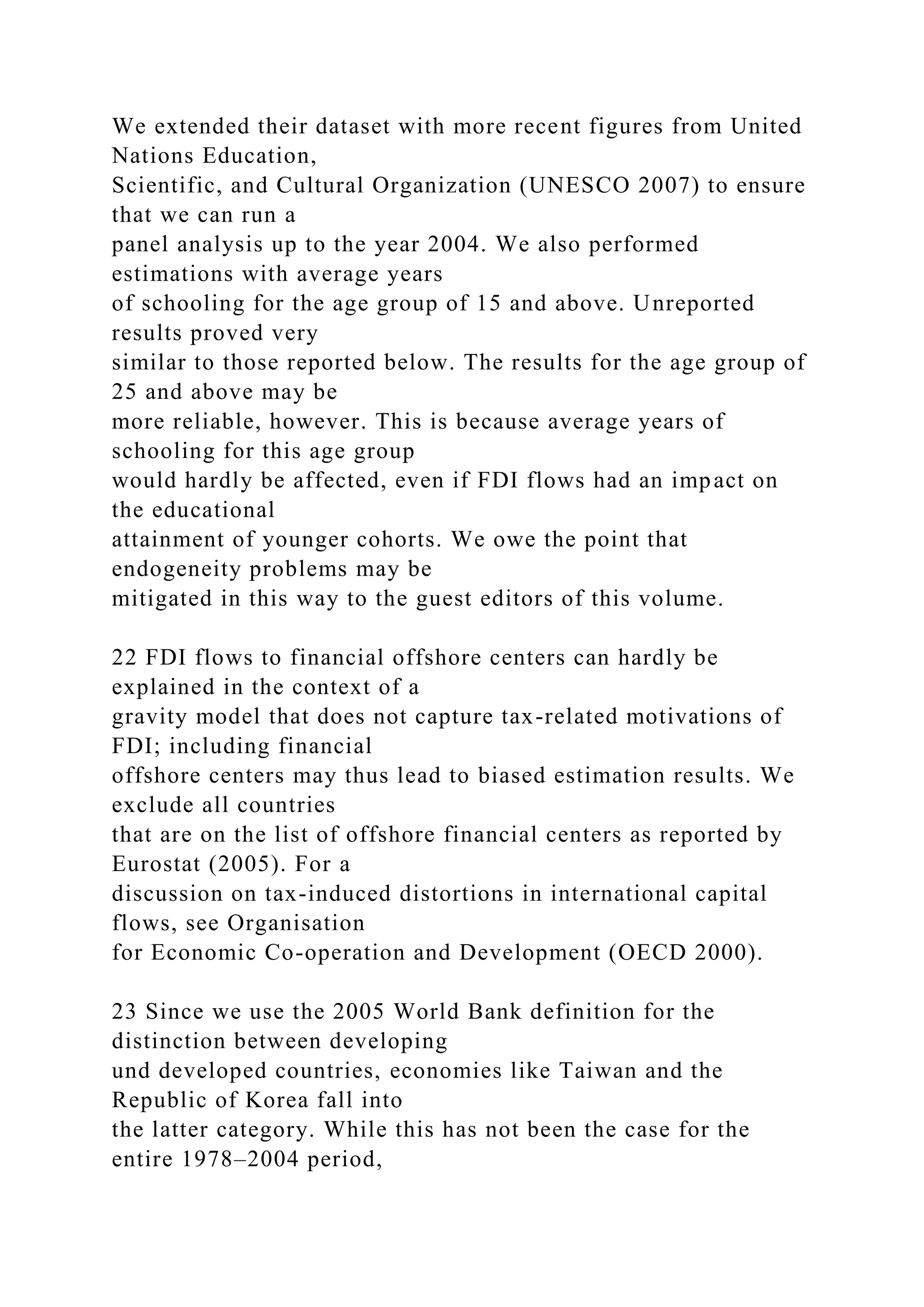

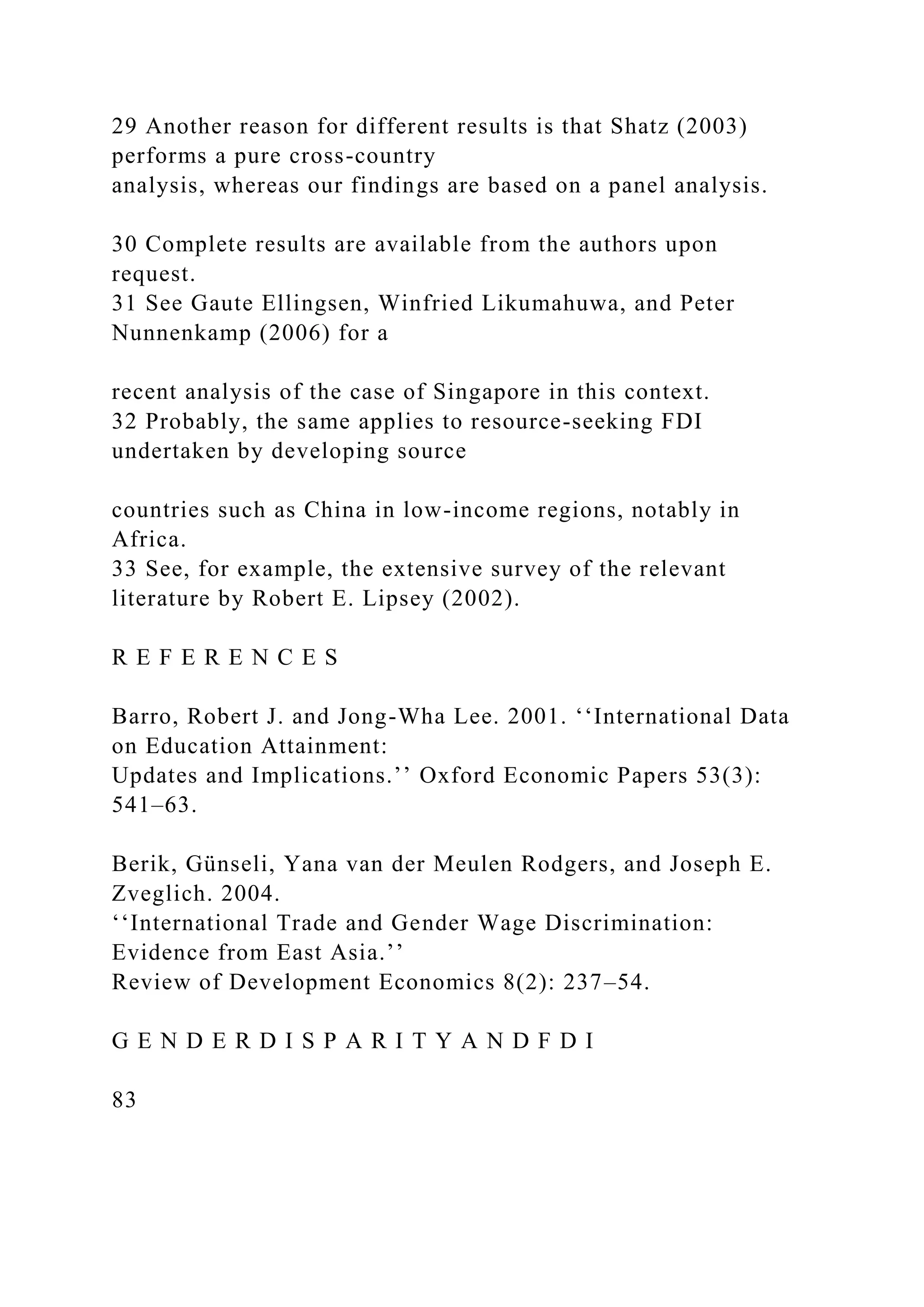
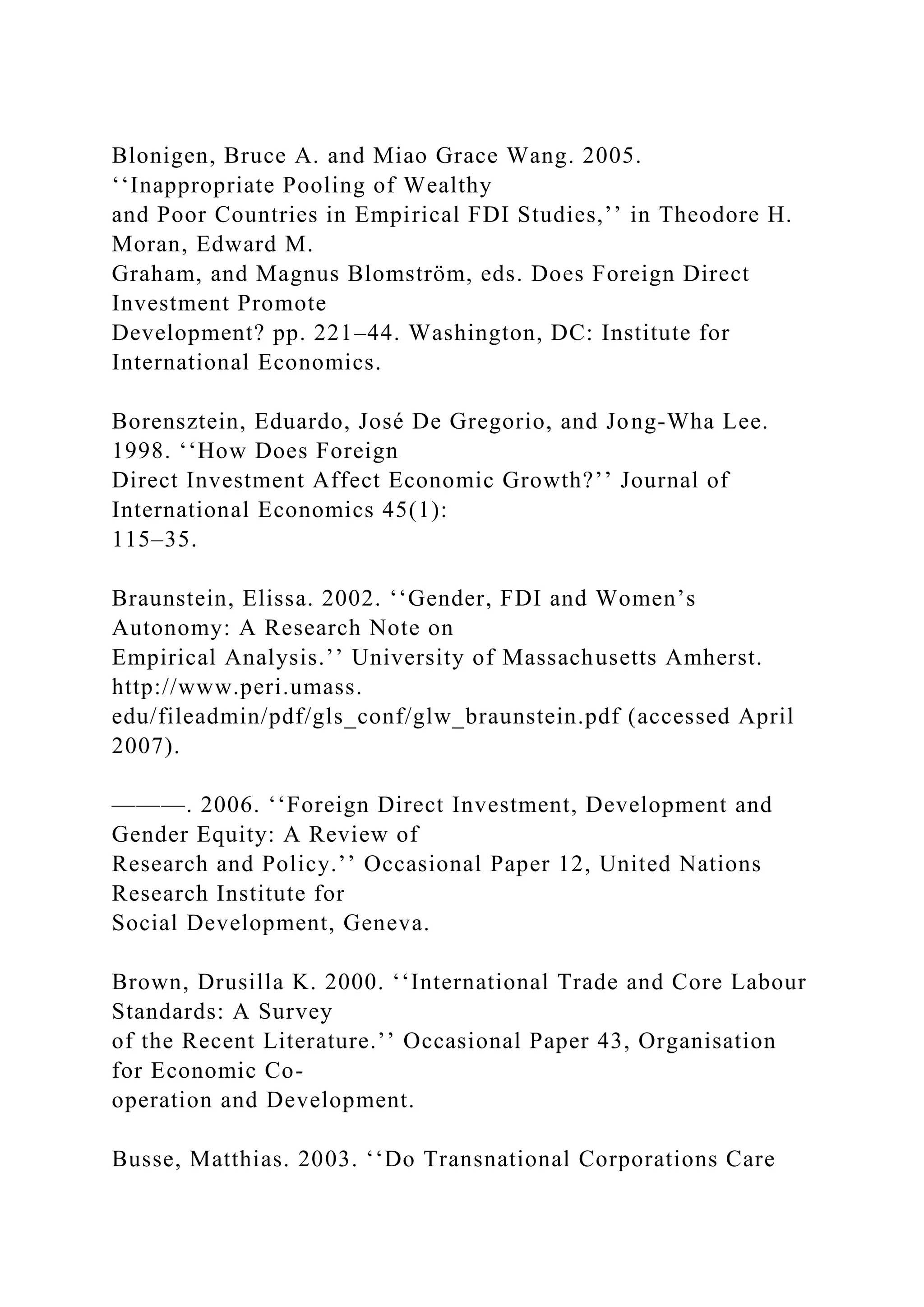
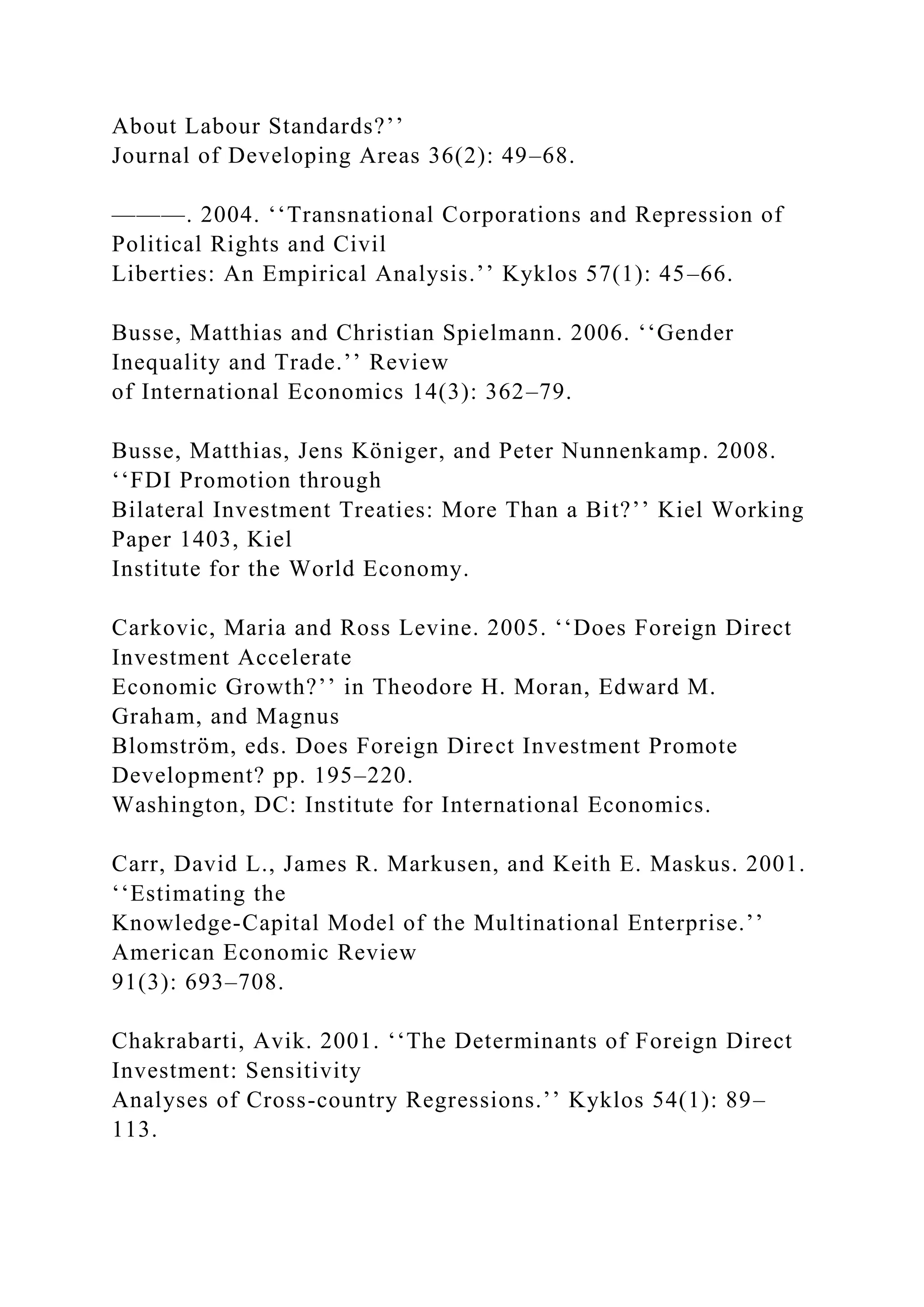
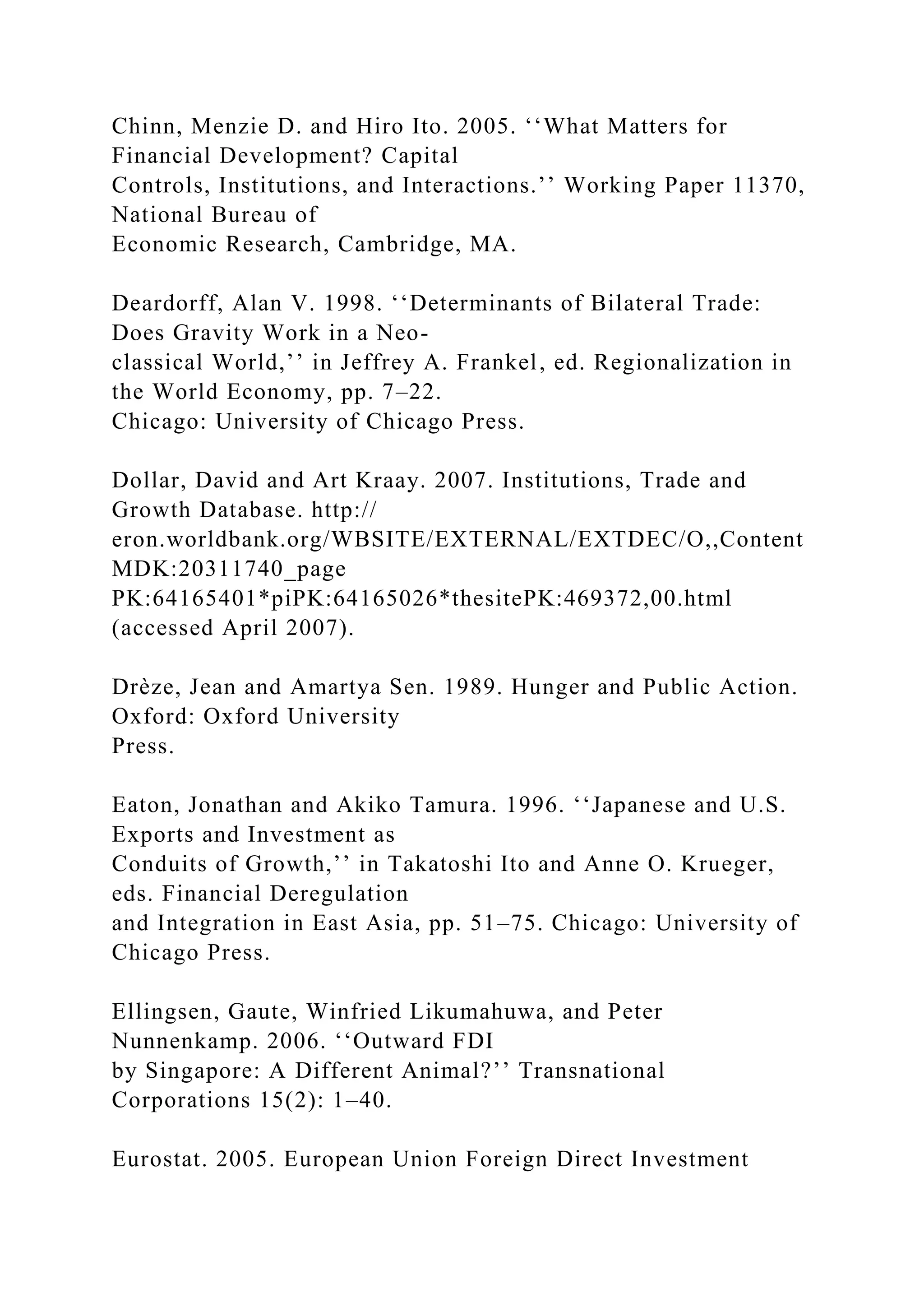
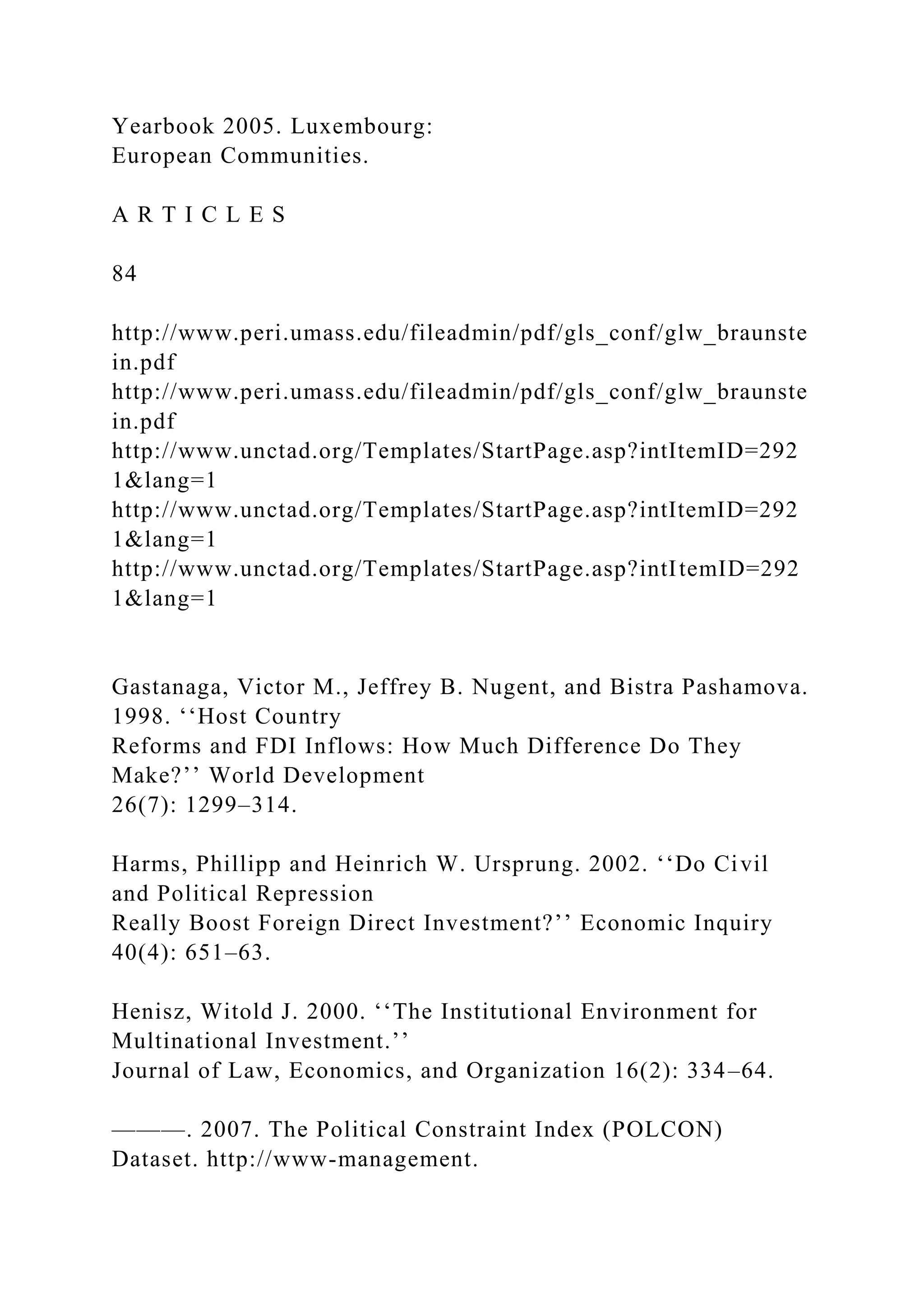

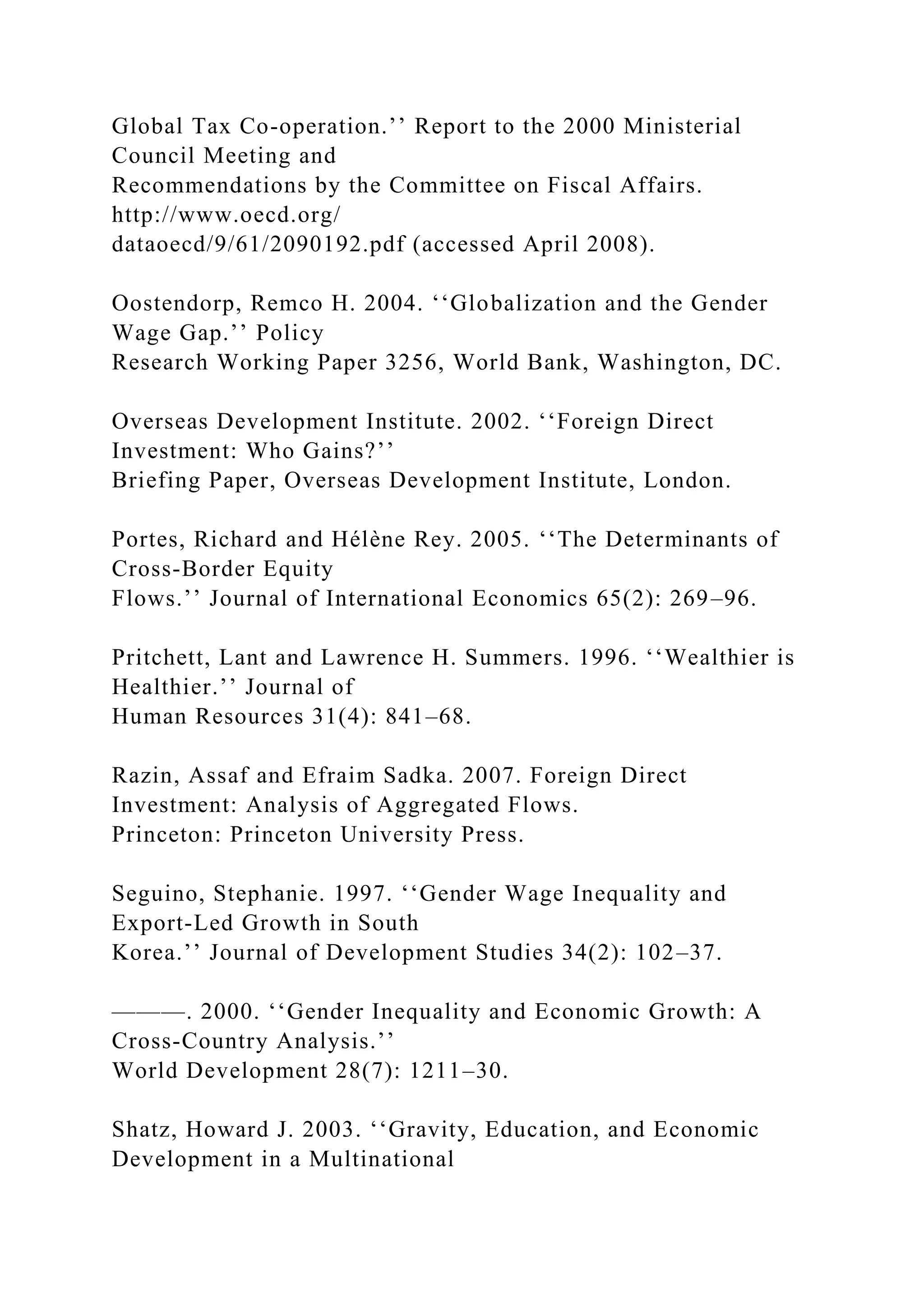
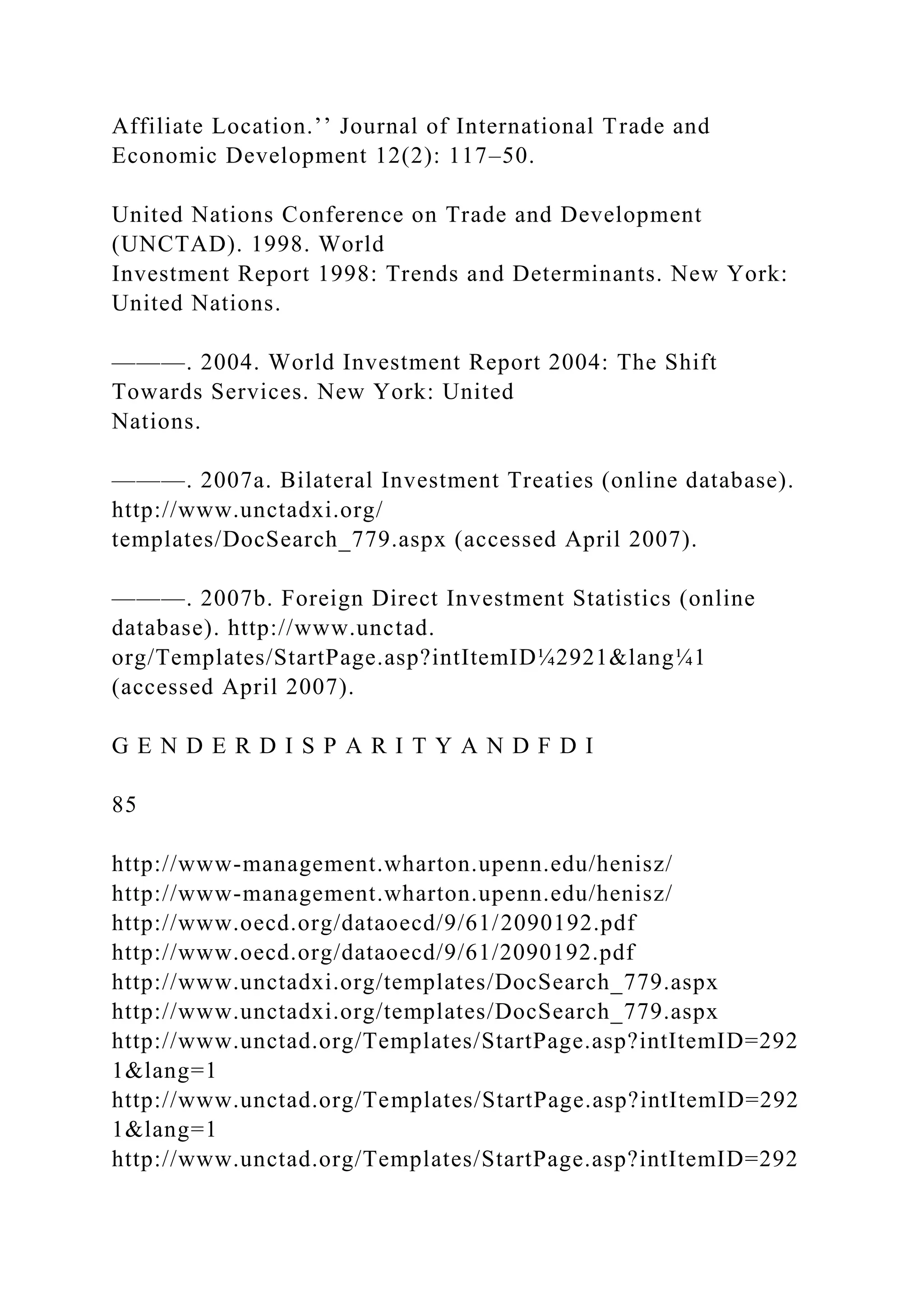














































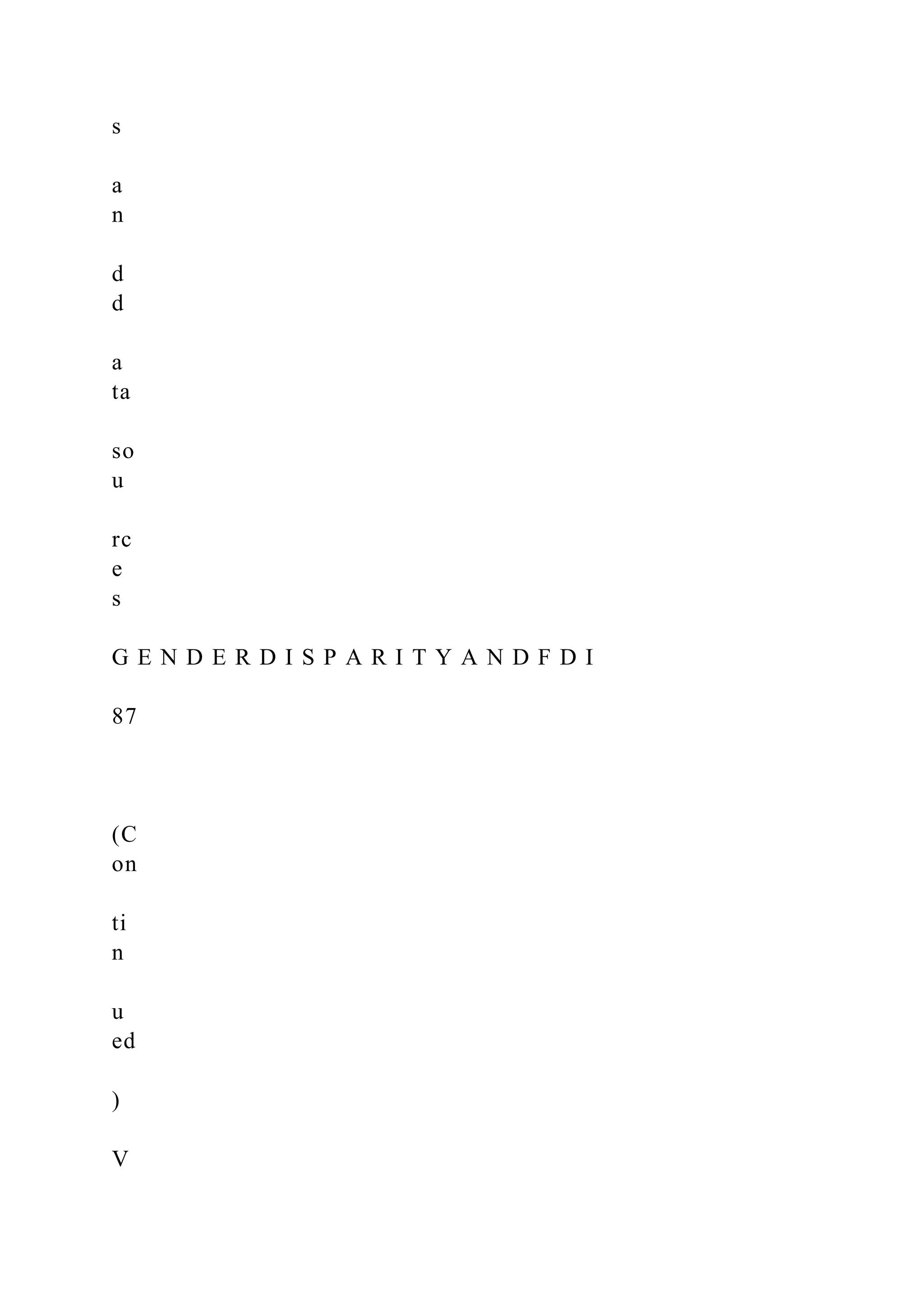


























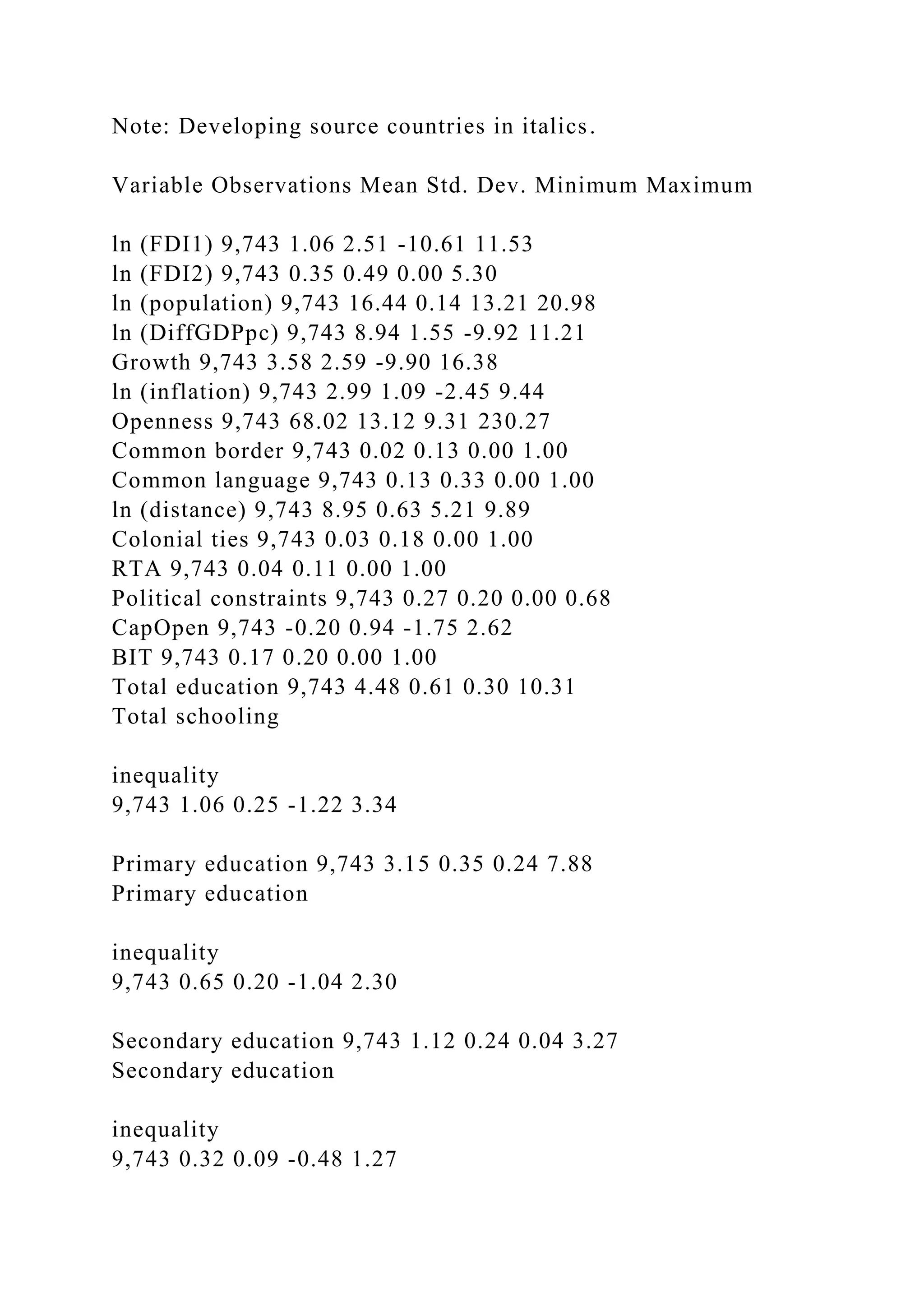
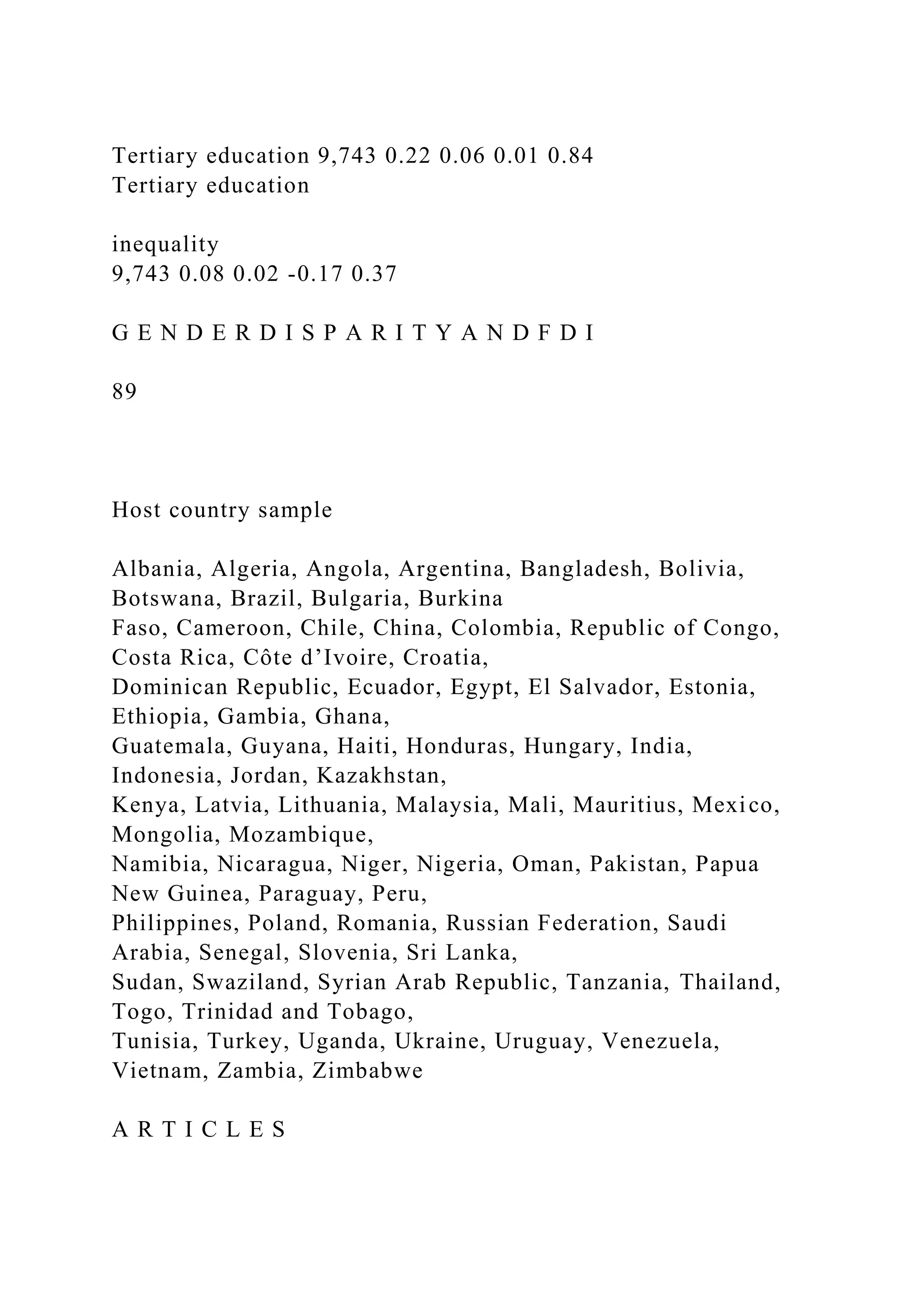
![90 Stronger Database Security Needed, Cyber-Attacks Show http://www.cioinsight.com/print/c/a/Latest-News/CyberAttacks- Highlight-Need-to-Focus-on-Stronger-Database-Security- 342260[2/2/2017 9:31:02 AM] Stronger Database Security Needed, Cyber-Attacks Show By CIOinsight | Posted 06-03-2011 When cyber-attackers breach an organization's network, the database is usually their target. However, many organizations are so focused on protecting the perimeter that they don't think abo protecting the database itself, according to several security experts. Many organizations still think that protecting the perimeter is sufficient to protect the data, but as recent data breaches at Epsilon and Sony have shown, traditional perimeter security can't relied on to protect the data, Josh Shaul, CTO of Application Security, told eWEEK. It's a "losing battle" to try to protect every single endpoint within the organization, Shaul said. That's not to suggest that organizations shouldn't be investing in firewalls and other security products. Shaul recommended the layered model, where attackers have to get past multip gatekeepers before they even get to the database. Organizations should be thinking, "When the perimeter fails, what's next?" and combining all the layers to pinpoint when something is wron according to Shaul.](https://image.slidesharecdn.com/week1databasesandsecuritylessondatabasesandsecurity-221119031308-df83ee2c/75/WEEK-1-Databases-and-SecurityLesson-Databases-and-Security-docx-204-2048.jpg)

